
Support Churchill Research Center and Polar bears
Donation protected
Disclaimer: The beneficiary is currently listed as myself but I will be posting updates on the funds' final usage at Churchill Northern Studies Center to keep everything transparent.
Intro
For this year's eco-voluntourism, I picked Polar bears conservation at Churchill Northern Studies Center, also known as Churchill Research Center or CNSC, an independent, non-profit research facility that primarily focuses on supporting researchers and education on a diverse range of studies in the subarctic. Established in 1976, it's located 23 km east of the town of Churchill, Manitoba, Canada.
Churchill is probably one of the most beautiful places I've visited. It is truly a privilege to have seen what it offers. Please read on to learn more about this fundraiser.
About Churchill
We can't talk about CNSC or Polar bears without talking about Churchill first. Churchill is located at the junction of arctic tundra and boreal forest and well known for its amazing wildlife and nature. Not just the "Polar Bear Capital of the World", Churchill is also home to thousands of Beluga whales, over 150 species of birds and spectacular views of the Northern Lights.
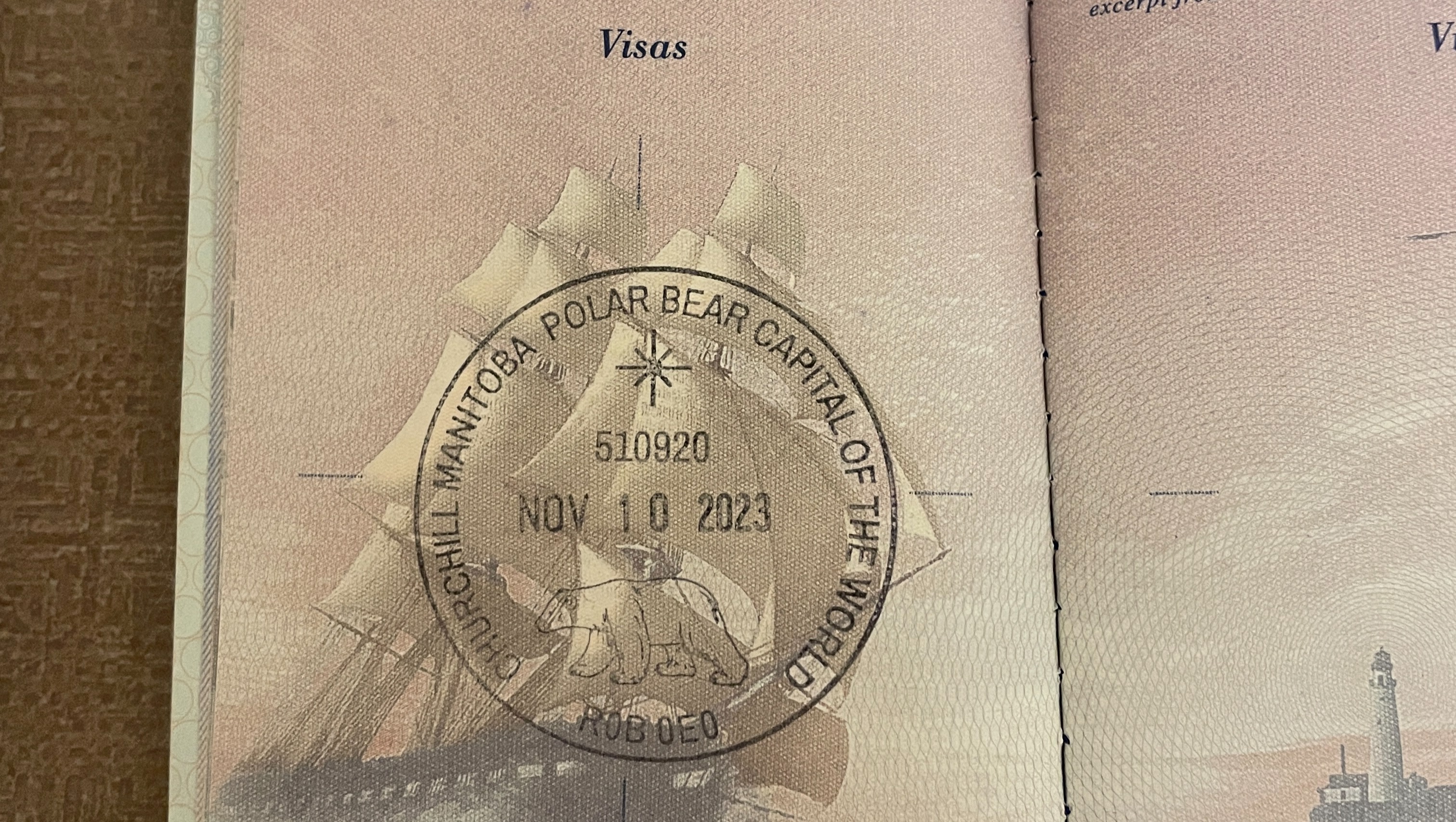
You can get your passport stamped at the local postal office
It's a unique and memorable place as there is no road leading to the town and all goods and food are transported either by train or air, which makes its cost of living relatively high and the community isolated. It currently has a population of 870 and 56% of its population is indigenous.
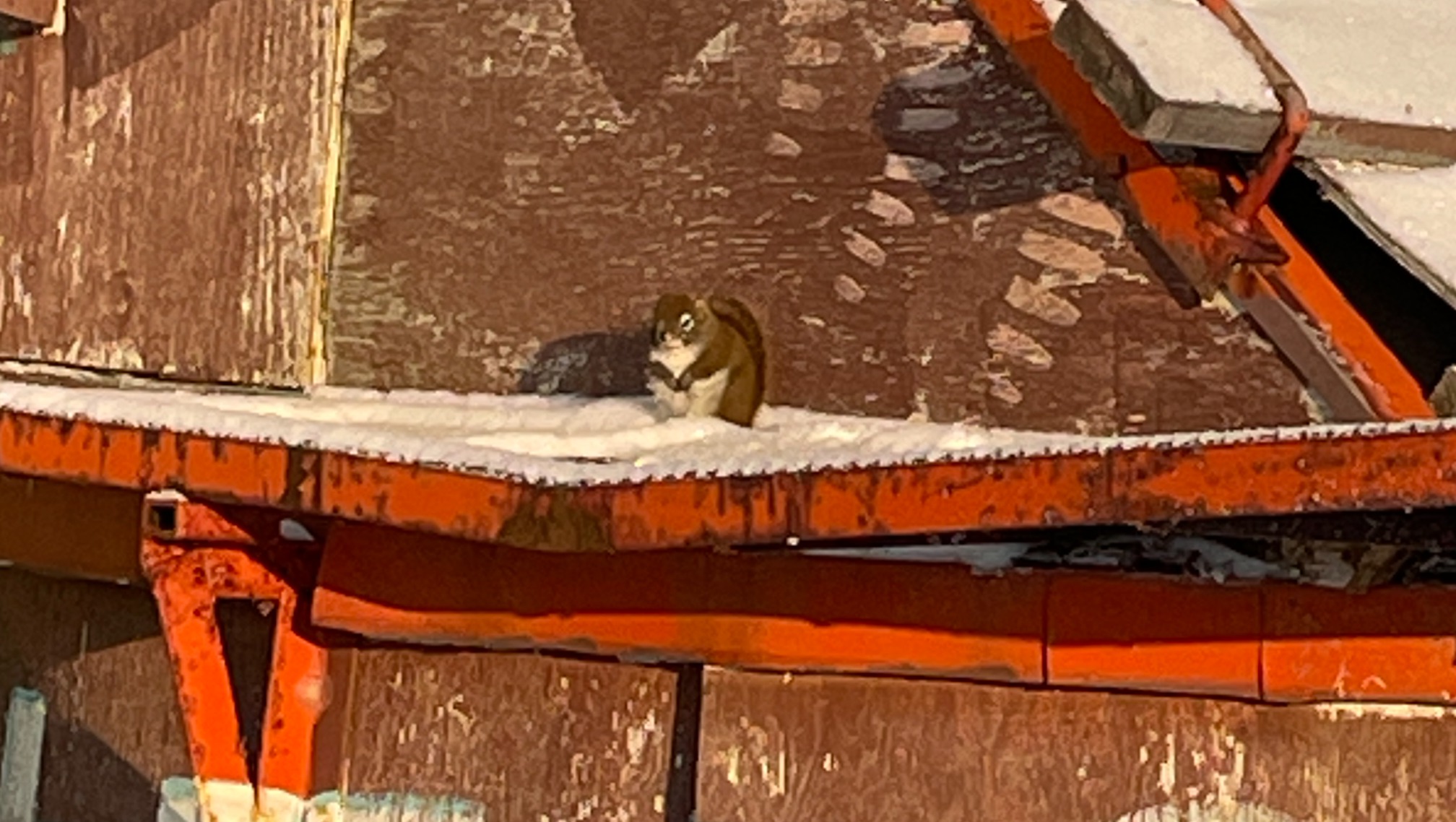
Chipmunk on the abandoned radar station in the 1960s, used to track launches from the nearby rocket range
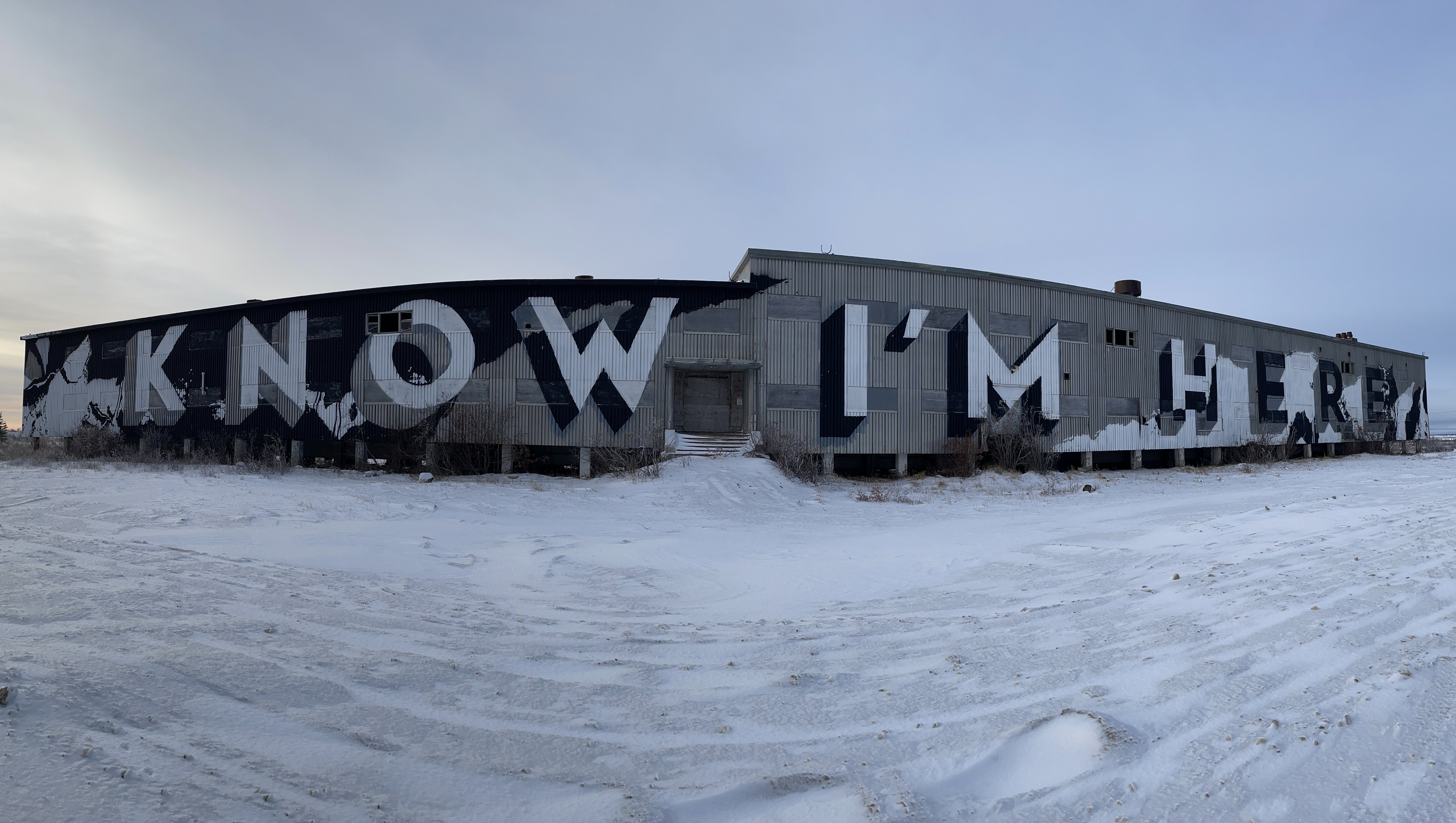
Town mural Know I'm Here on one of the former military bases by Georgia Hill, Australia
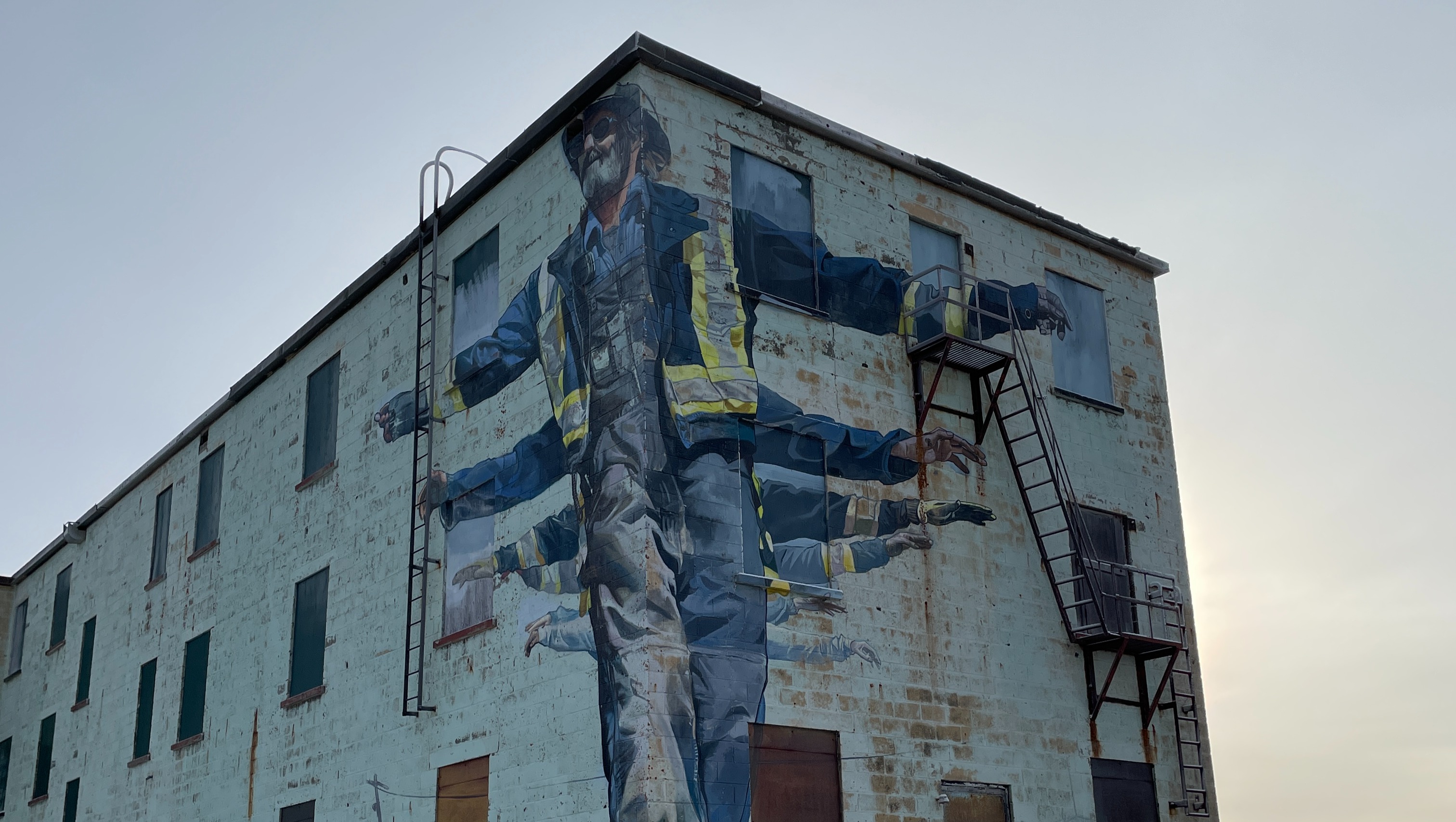
Town mural The Rope by Case Maclaim, Germany
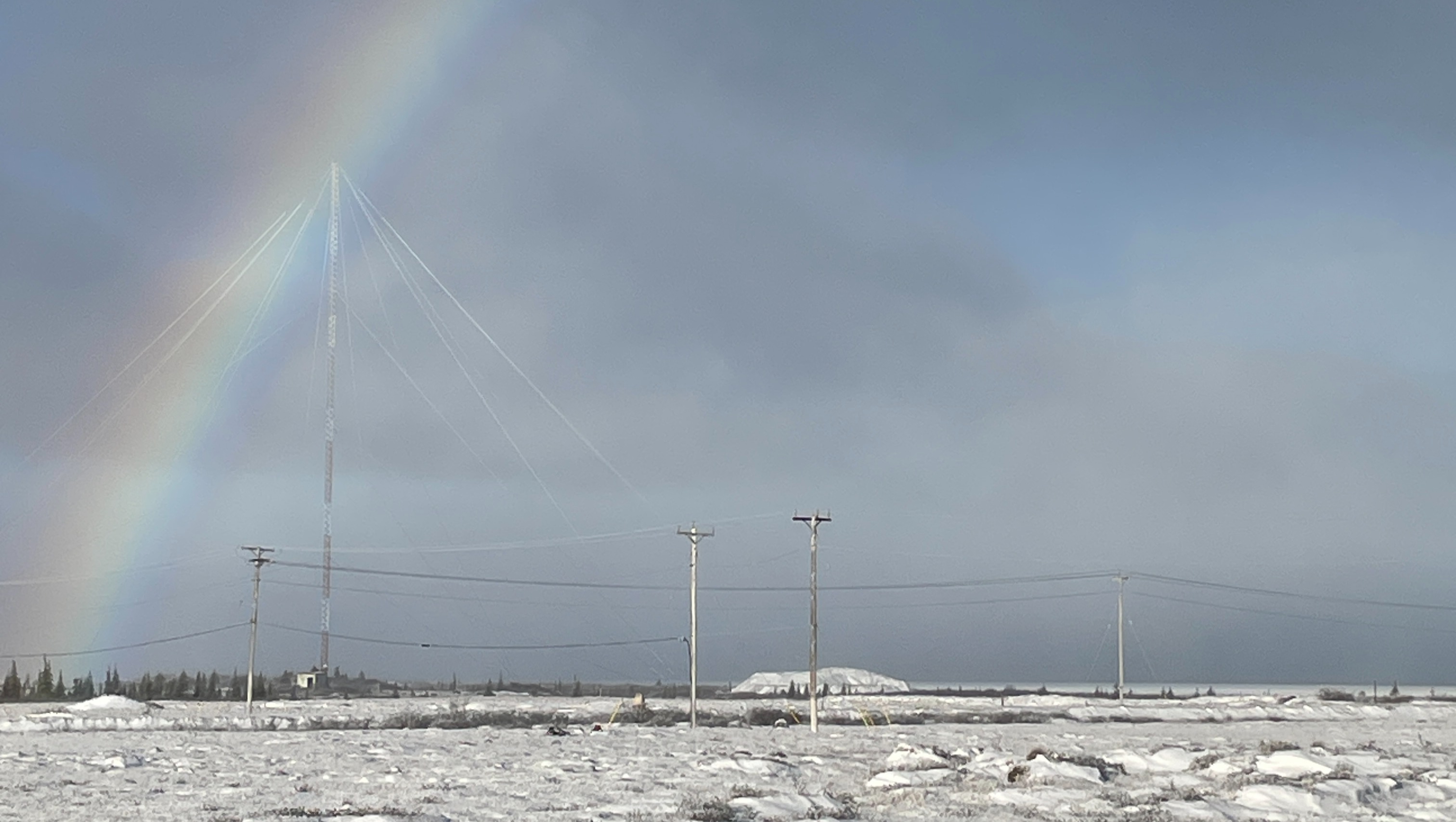
Beautiful rainbow as we drove on the main road
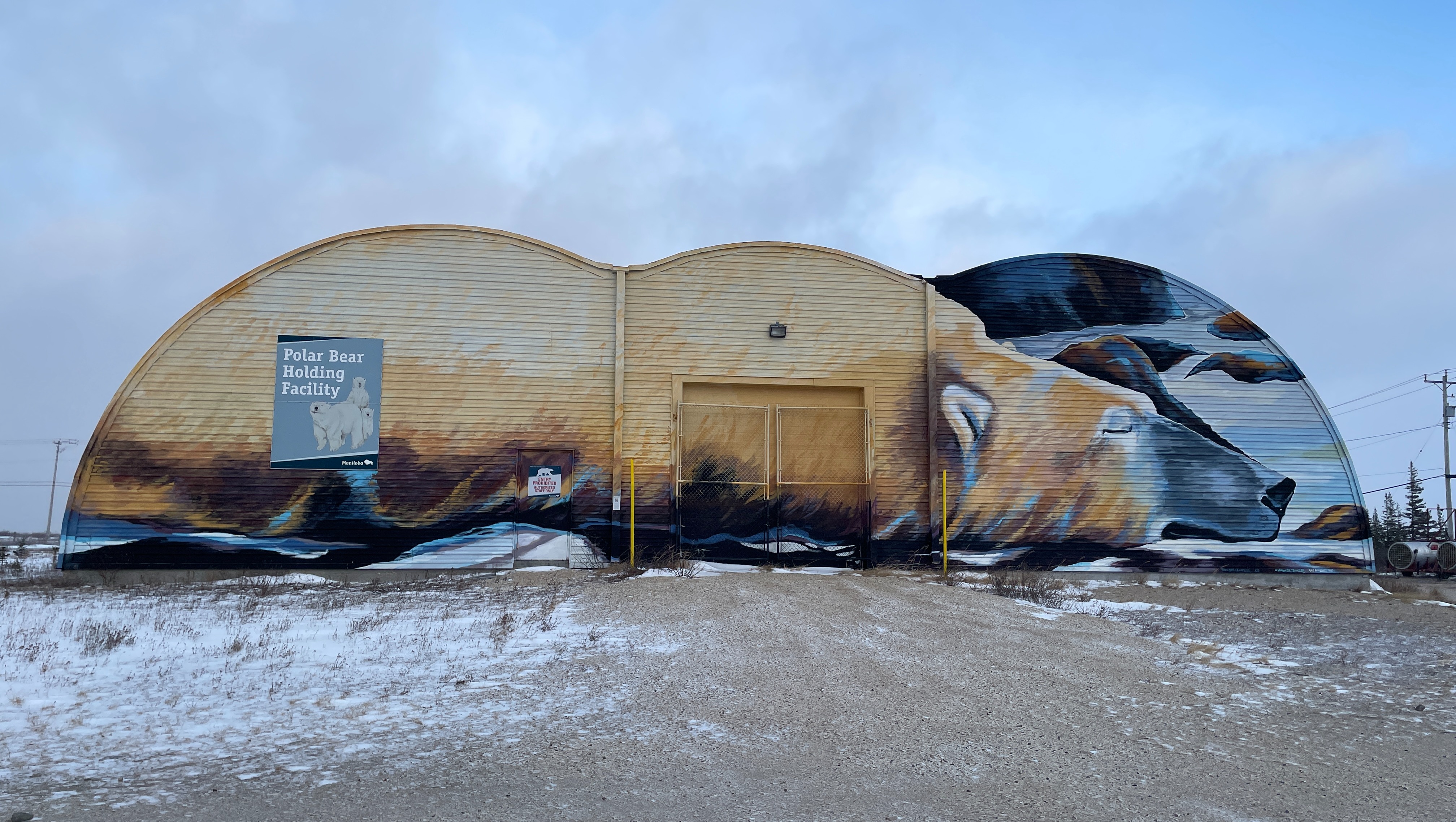
Polar bear holding facility (There were 6 Polar bears in the facility at the time I was visiting)
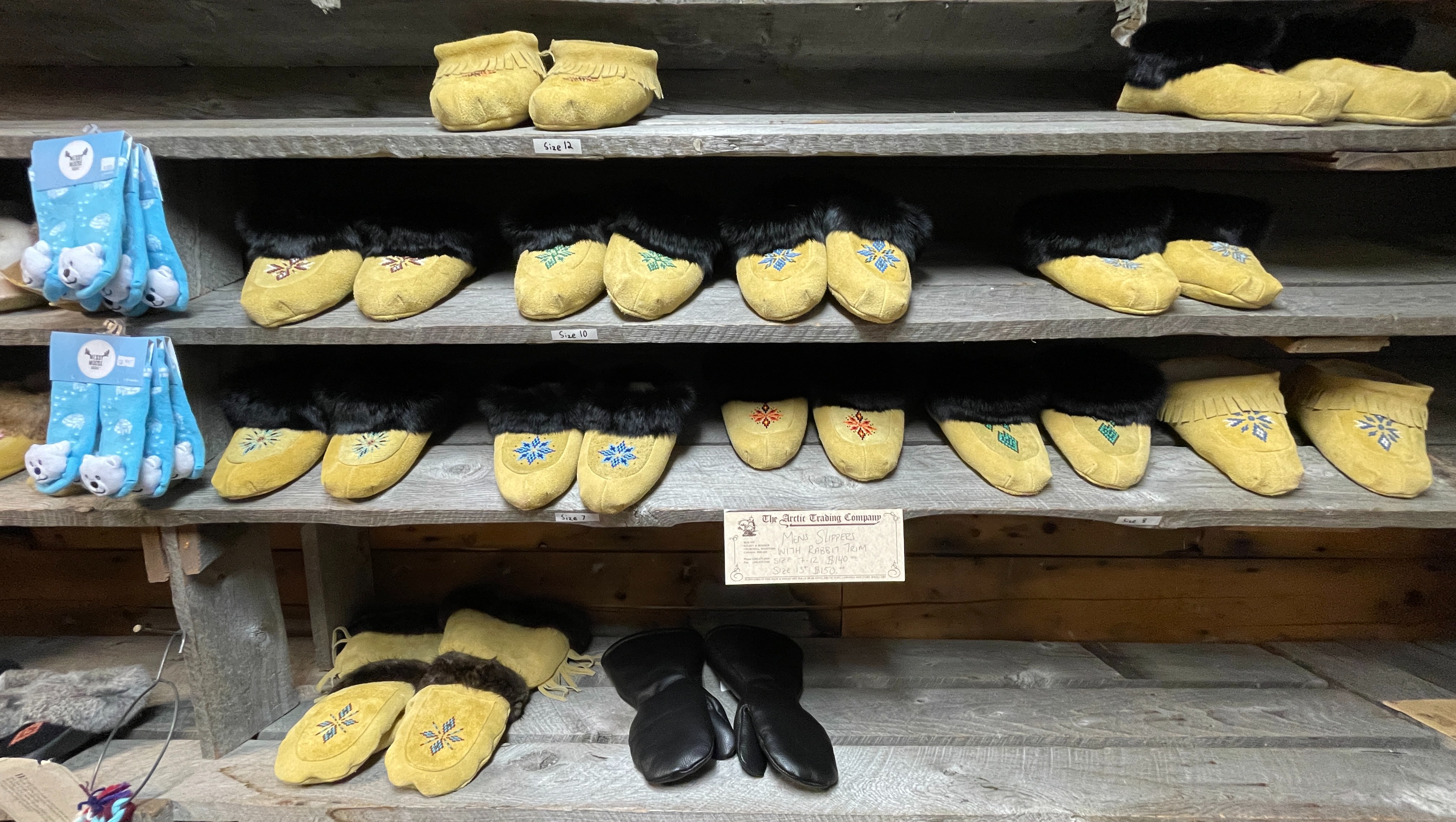
Moccasins at the Arctic Trading Post gift shop
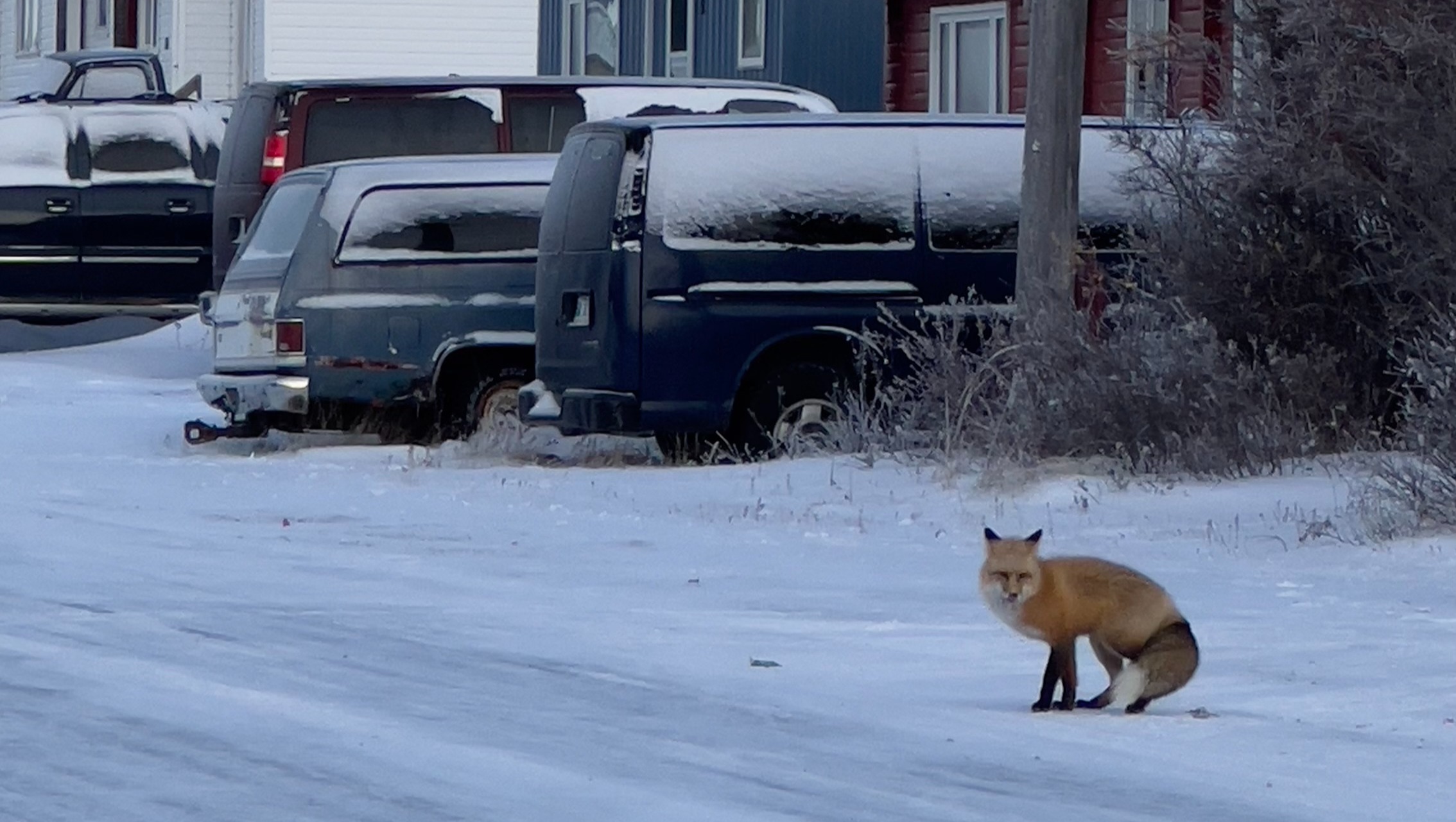
A red fox spotted in town

Displays at the Arctic Trading Post
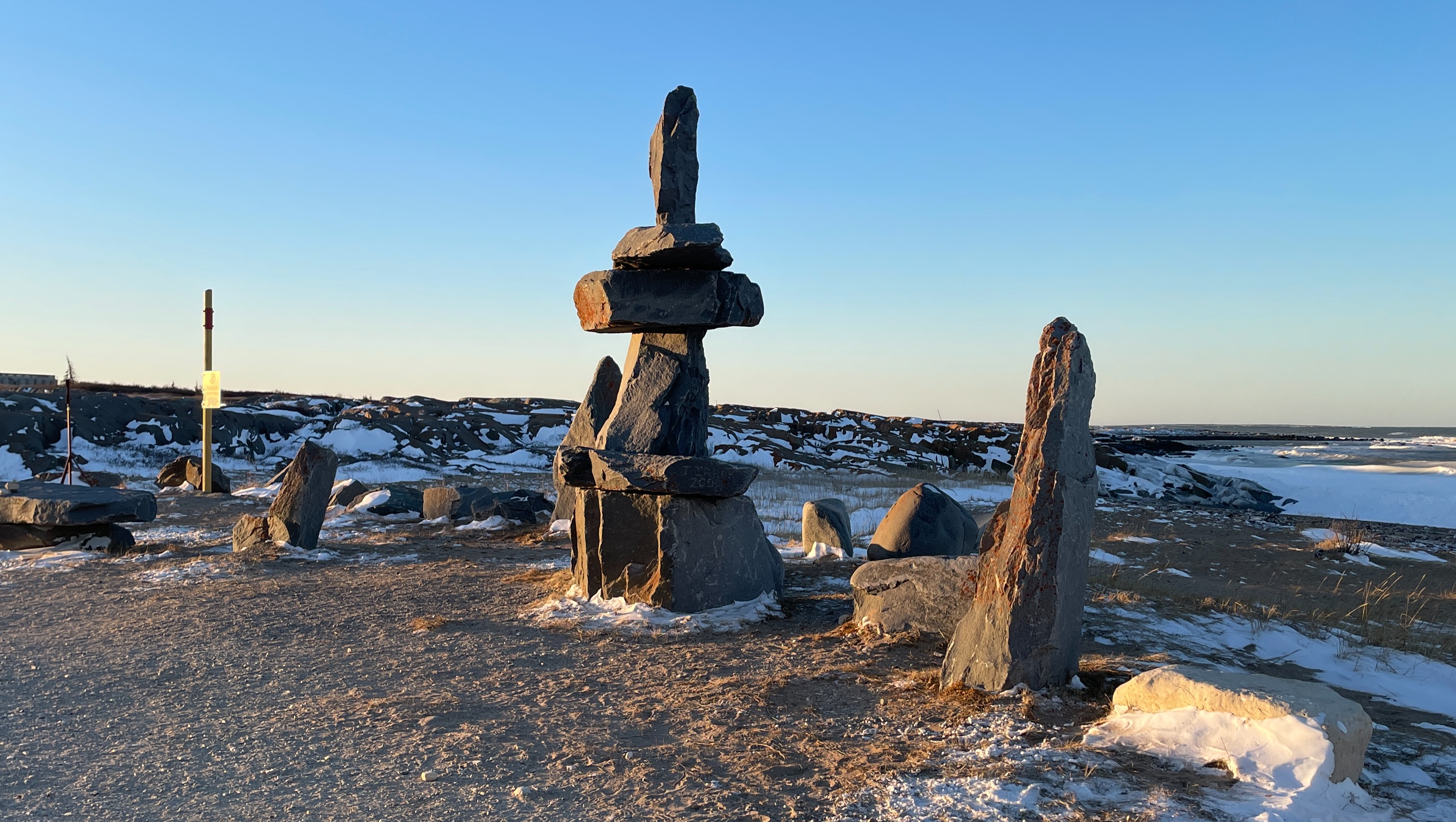
An inukshuk in town
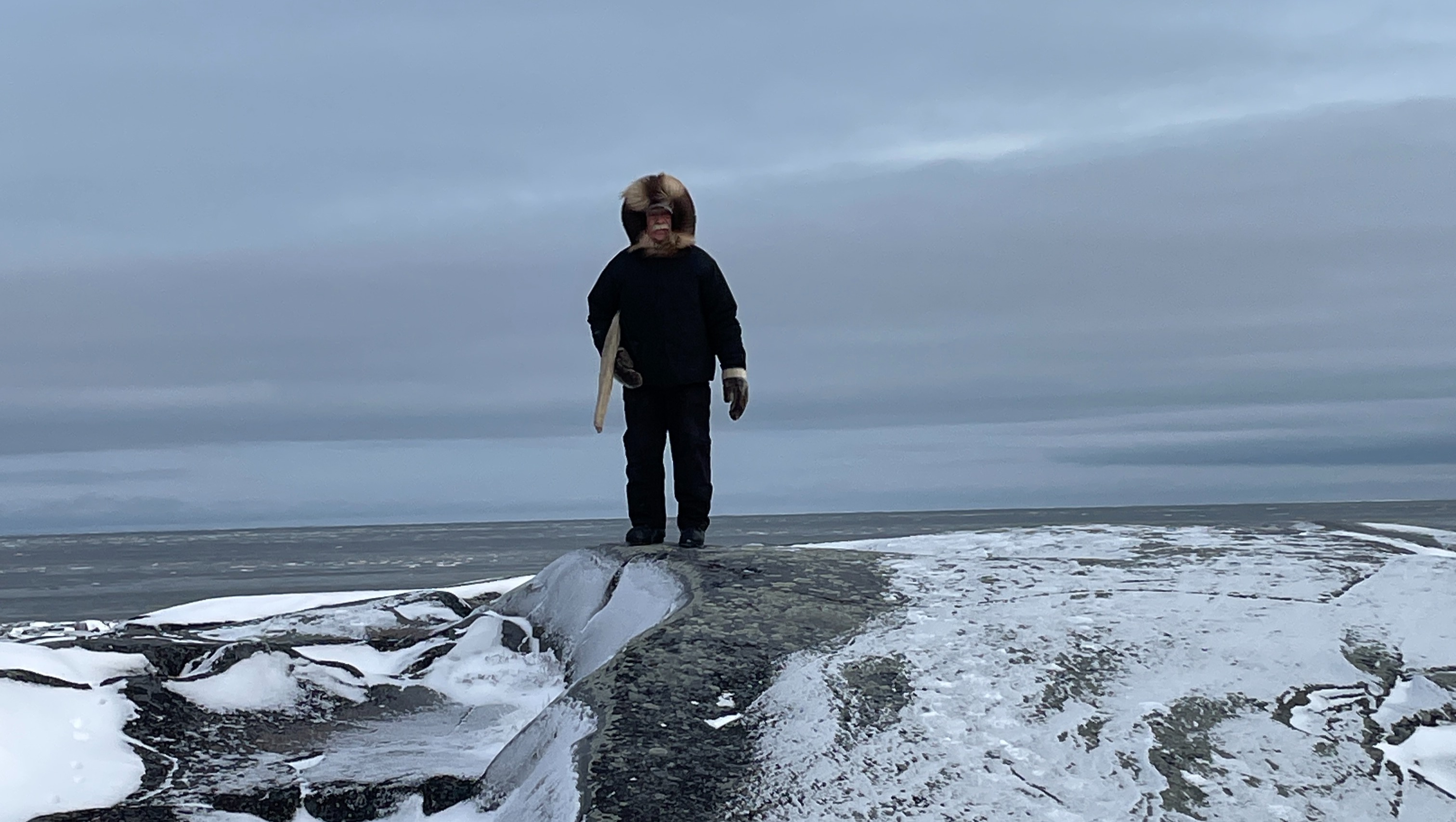
Bear guard in Cape Merry
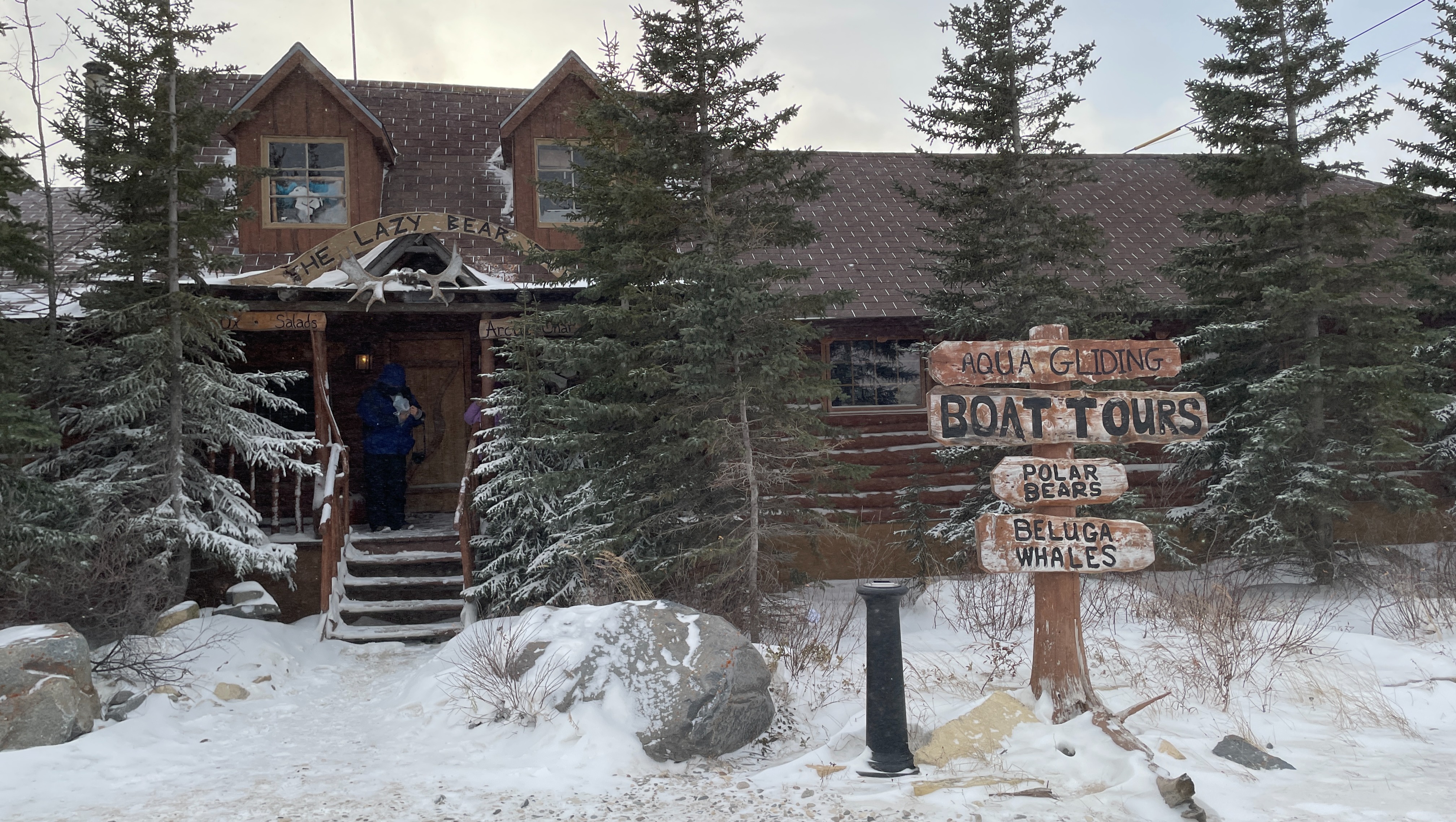
Lazy Bear Cafe
About Churchill Northern Studies Center
Established in 1976, CNSC is financially sustained by government grants, fees for services, revenues from educational programming and member donations. It seems to be the only organization in the area that offers a volunteer program. It launched a Rocket Green project in 2018 where organic vegetables are grown through a hydroponic system to later distribute to the local community at an affordable price. The project is innovative and beneficial to the local residents due to high cost of living in Churchill. The new station complex built in 2011 is certified LEED Silver, Leadership in Energy and Environmental Design, an internationally accepted benchmark for the design, construction and operation of high-performance green buildings.

The new LEED CNSC field station exterior
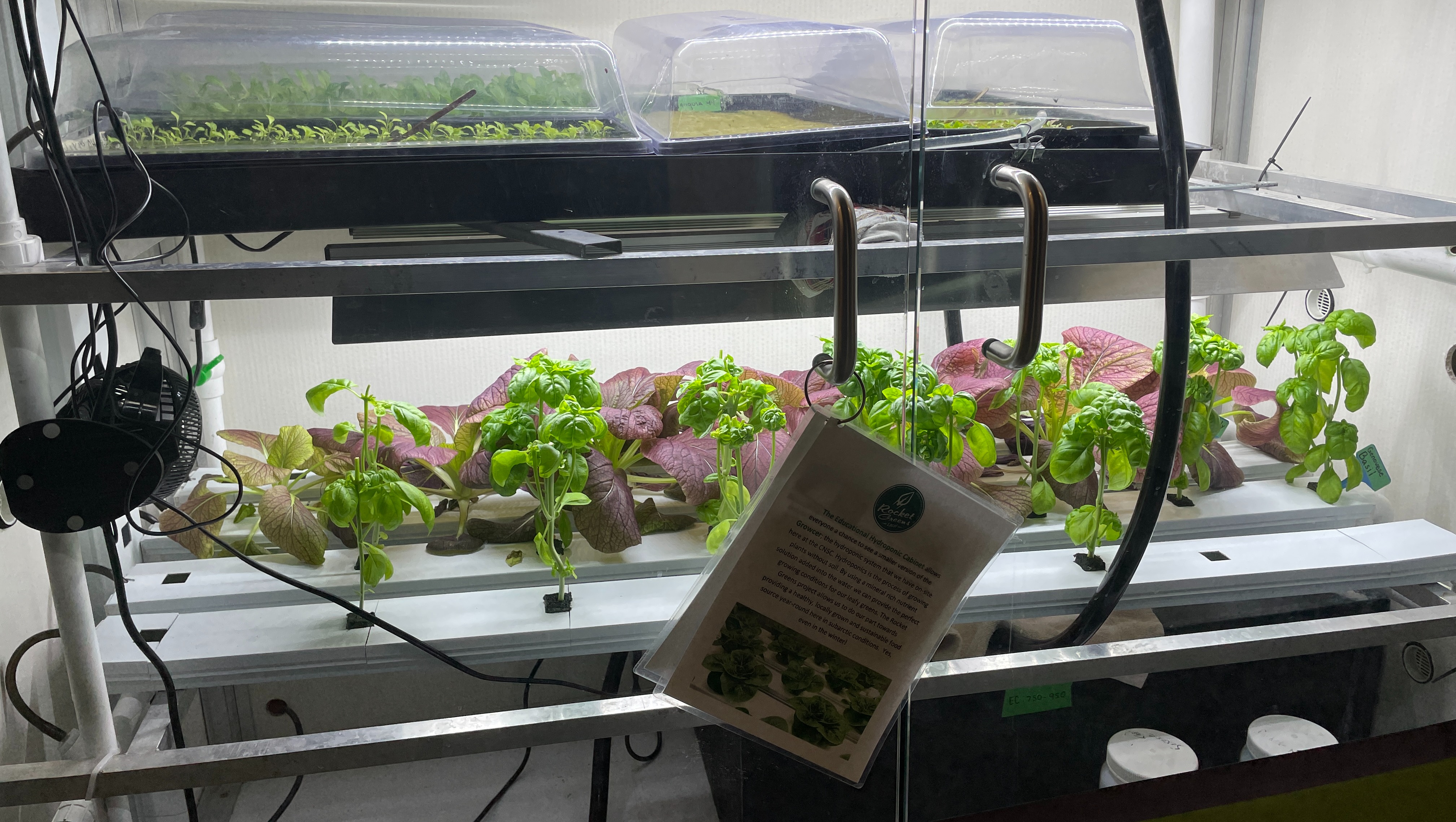
Rocket Green project, hydroponic vegetables grown at CNSC
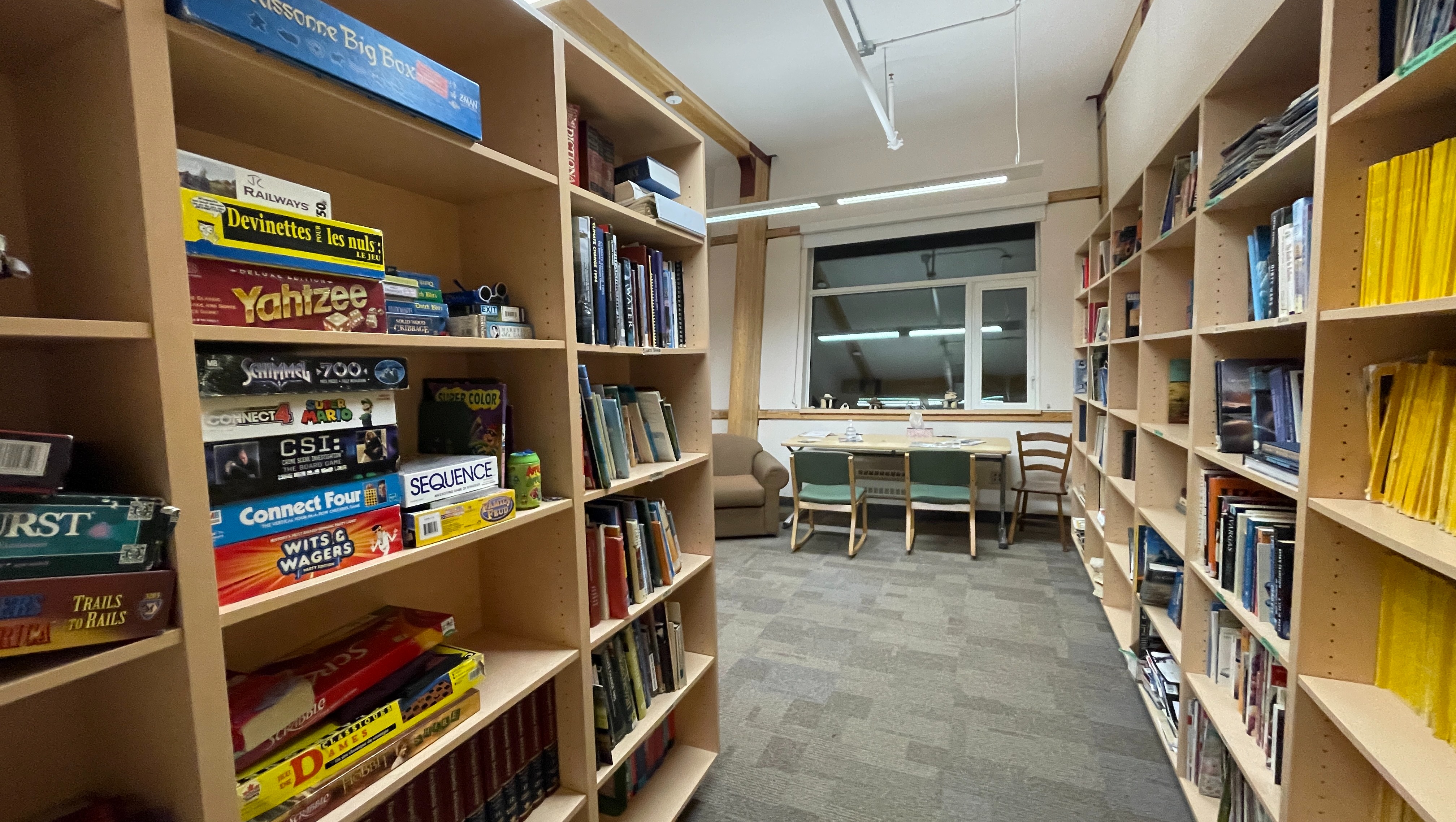
CNSC library
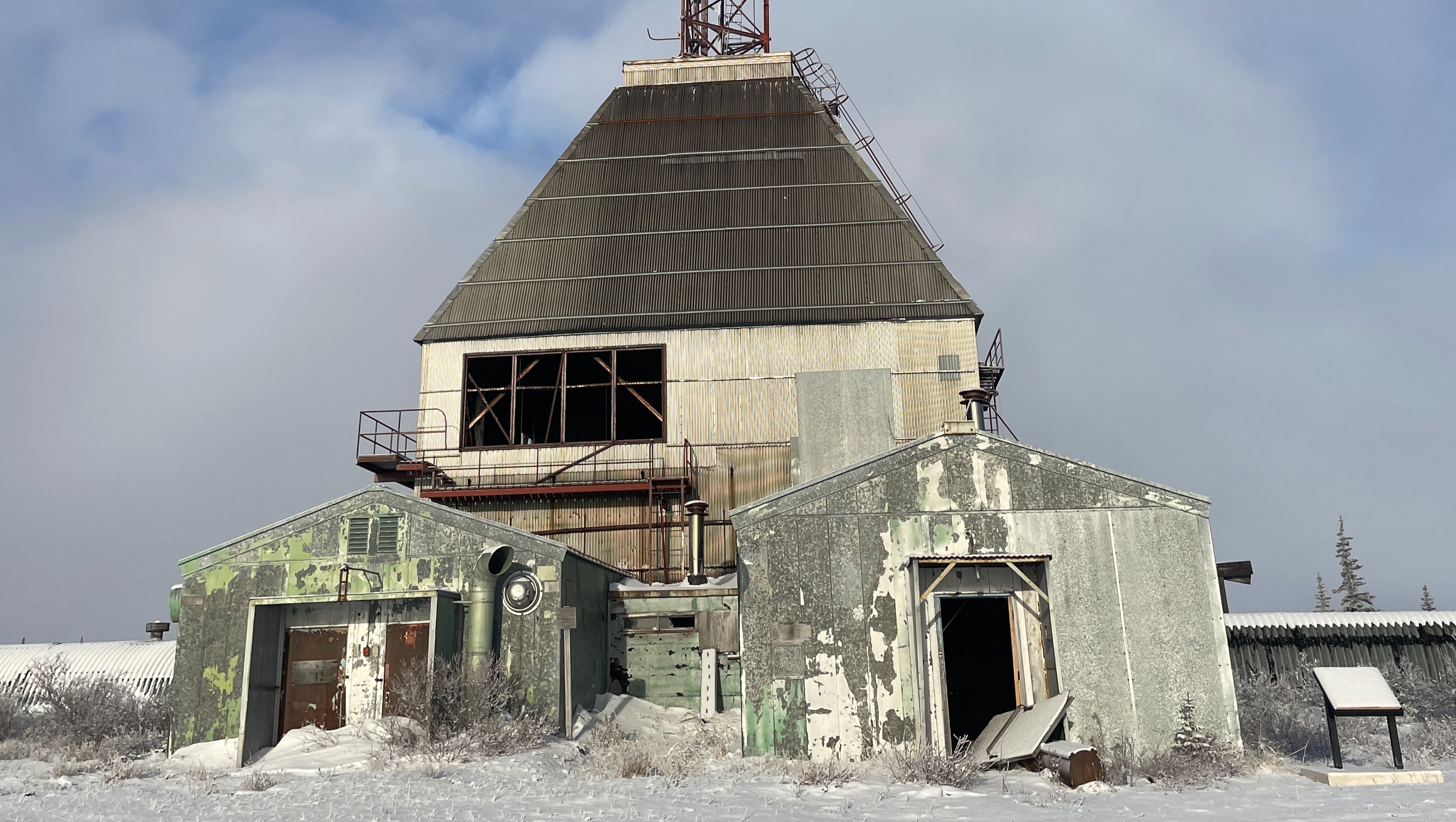
Historic Research Rocket Range next to the CNSC field station
CNSC facilitates learning programs and volunteer expeditions throughout the year for non-credit learning vacations at a very affordable price comparing to other local attractions, as well as university credit courses and youth programming. It hosts conferences focused on northern issues and offer day tours of the Rocket Range and the green facility.

Evening lecture at CNSC for the Learning Vacation guests by Dr. Jane Waterman
During the volunteer expedition, volunteers help with kitchen duties at CNSC such as washing dishes and housekeeping such as bathrooms/showers cleaning and beds making. Bear season, which extends from October to November is the busiest season of the year due to many enthusiasts coming from all over the world to observe the lord of the Arctic, Polar bears. Volunteers' accommodations, meals and transportation are covered. As an incentive, volunteers also get to go on Tundra Buggy® rides, town tours, dog sledding, Rocket Range tour and helicopter rides if space allows. Volunteers are also free to rent a vehicle to explore on our own if there is one available and attend evening lectures given by the Learning Vacation instructor, usually a University professor. Revenues from these services go directly towards the center's operations.
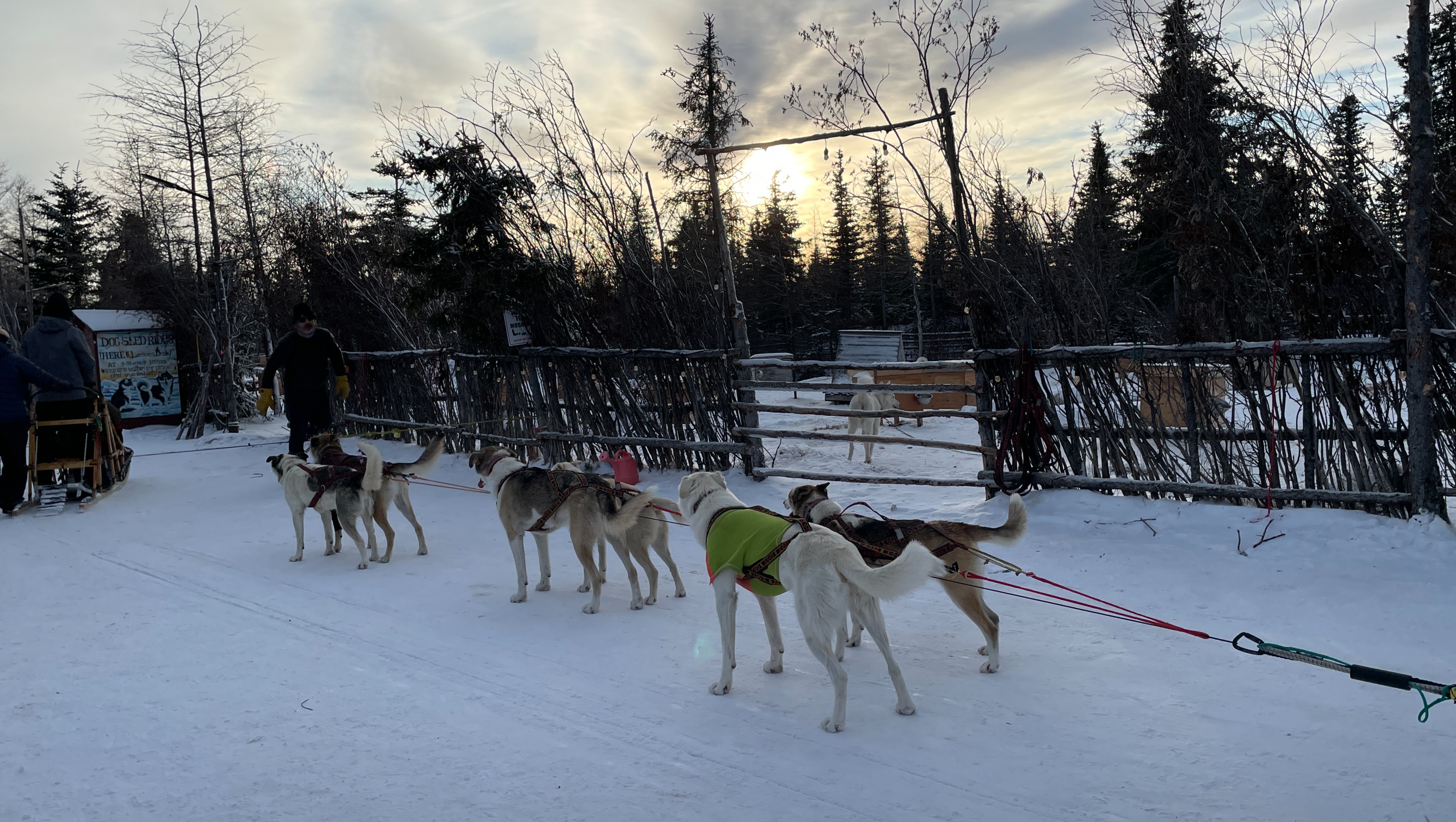
Wapusk Dog Sledding
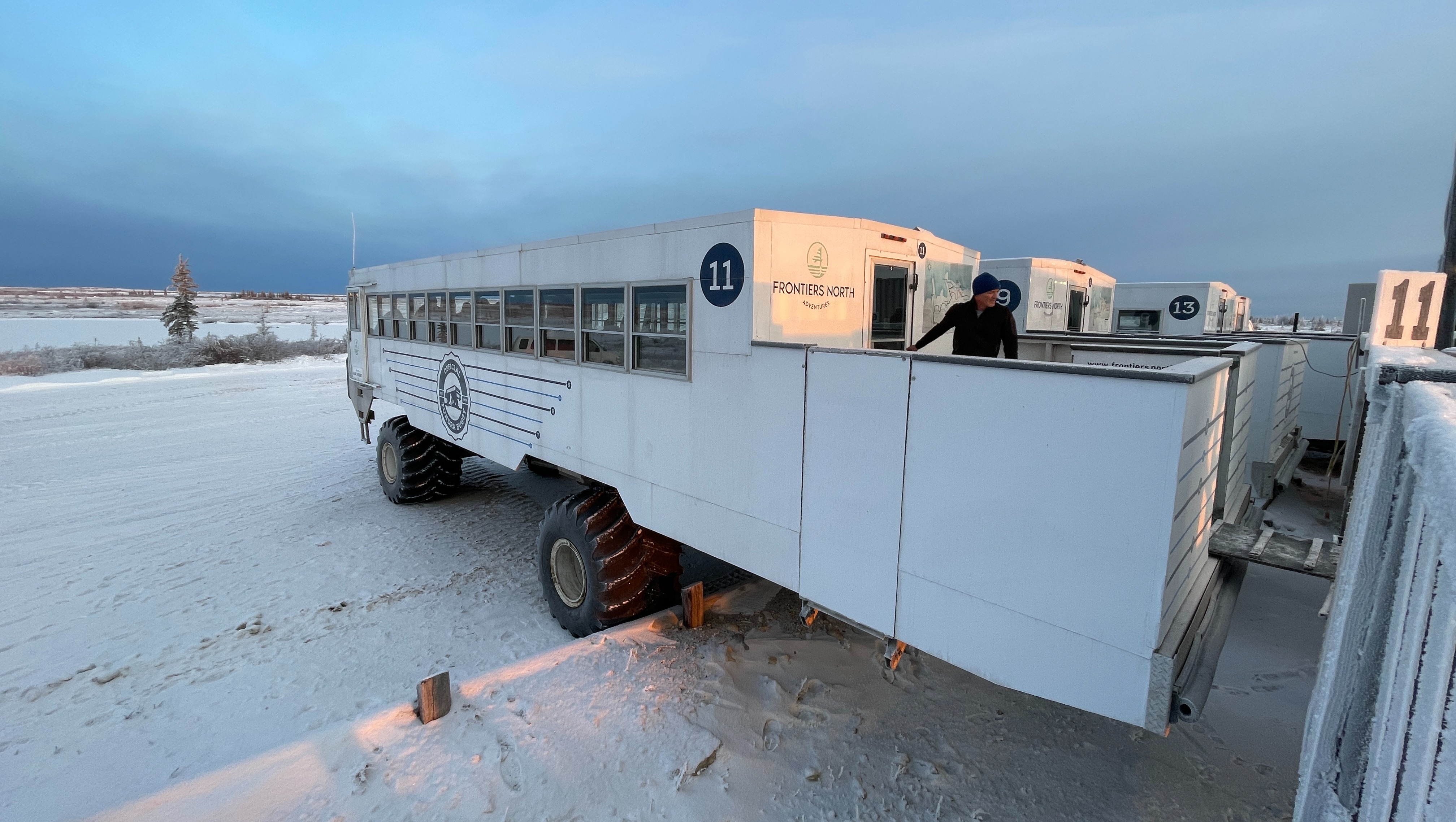
Tundra Buggy® dock operated by Frontiers North Adventures
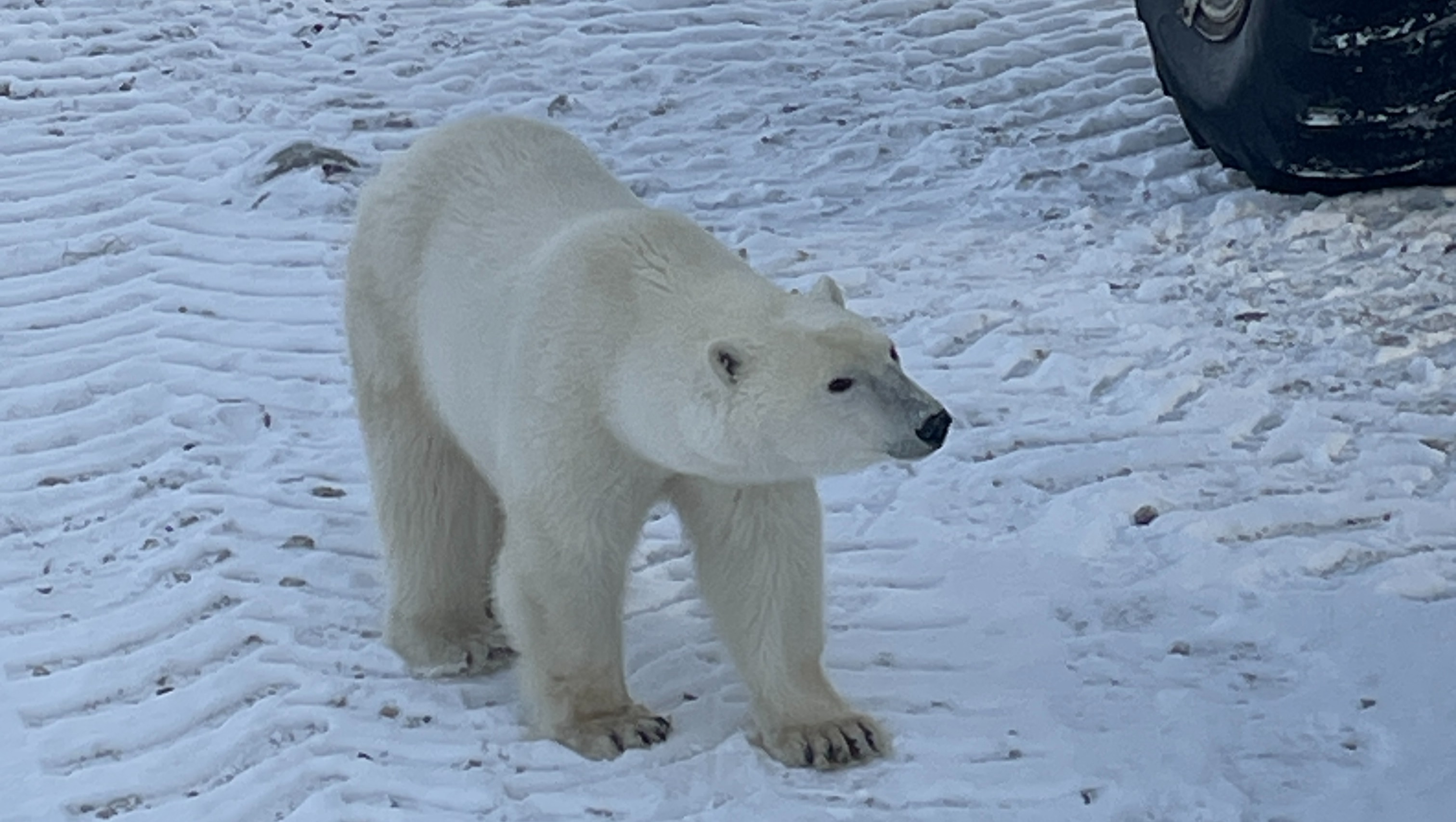
A curious bear got really close to the buggy
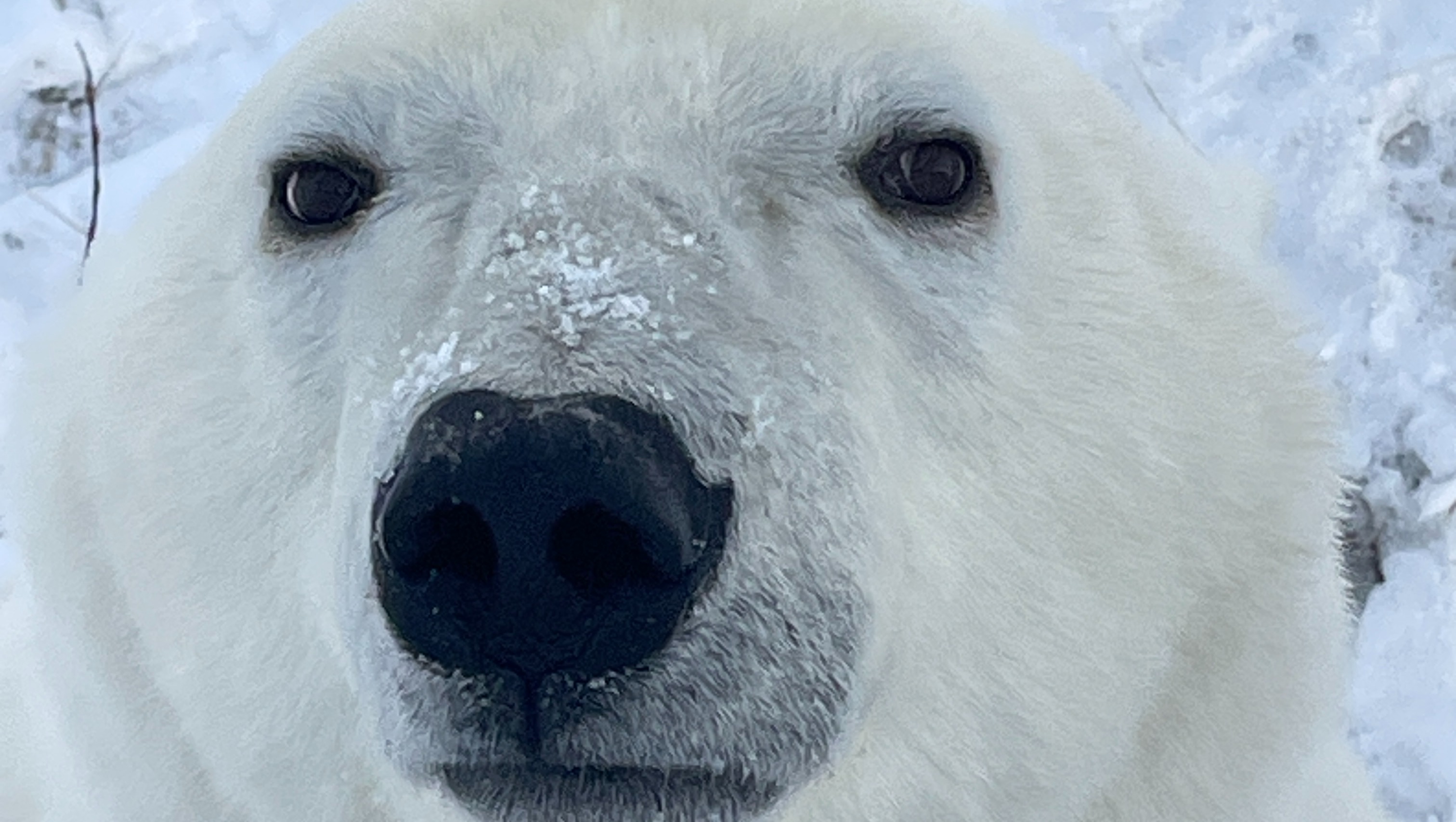
A close up of a standing bear
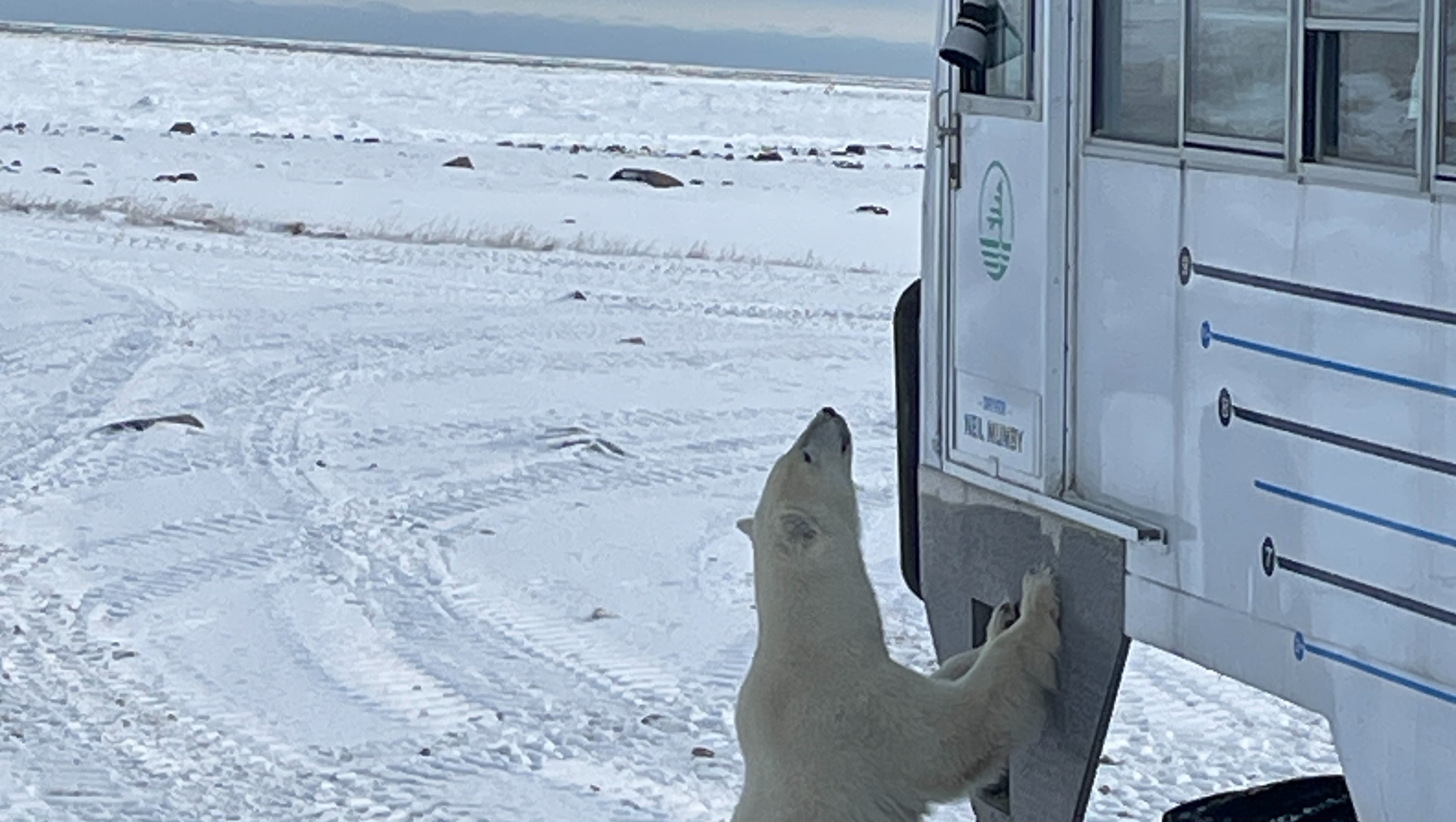
A photographer snapping photos of a standing bear from inside the buggy
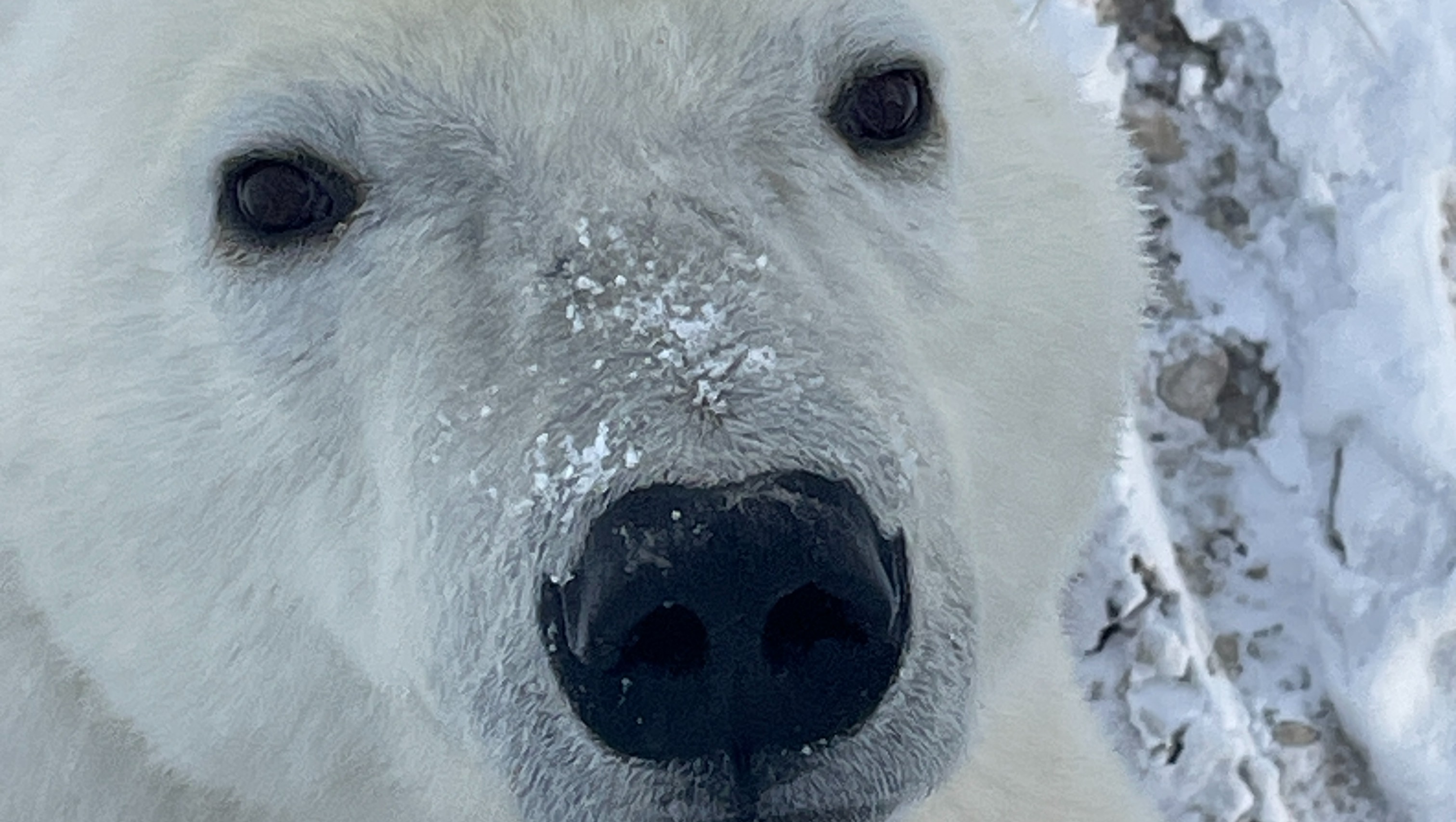
A very boopable nose
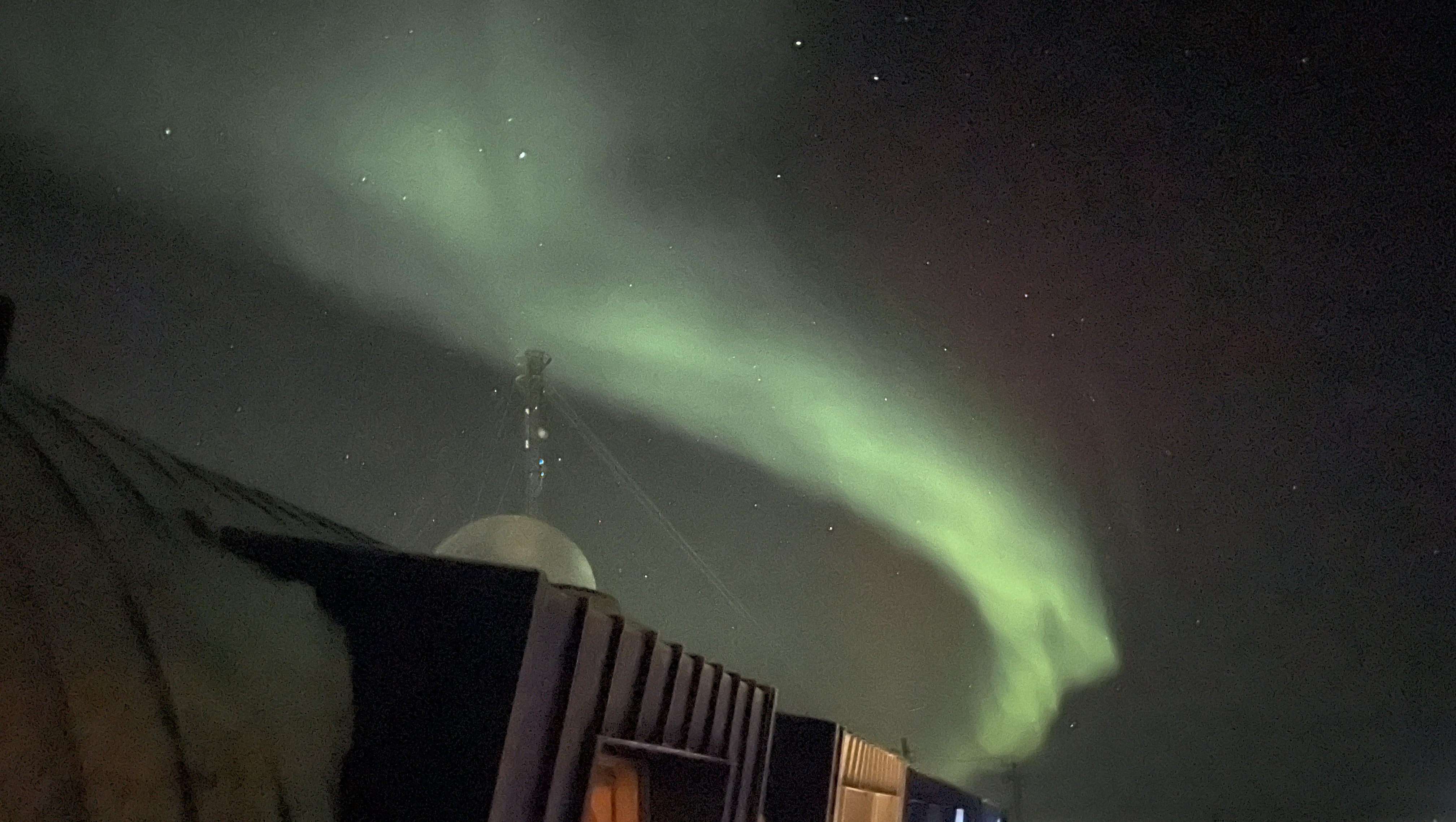
Northern Lights captured from the CNSC deck
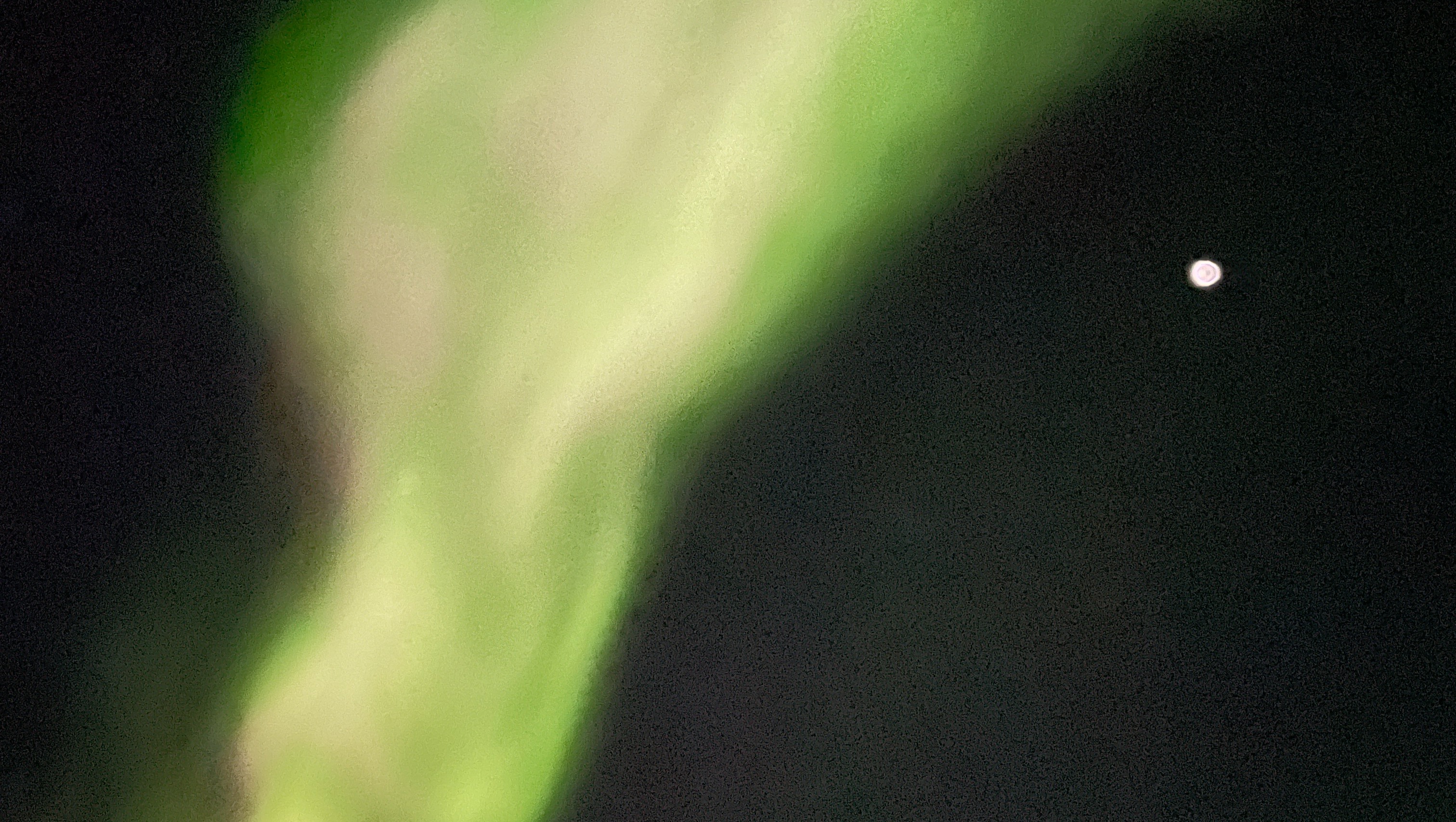
Intense Northern Lights
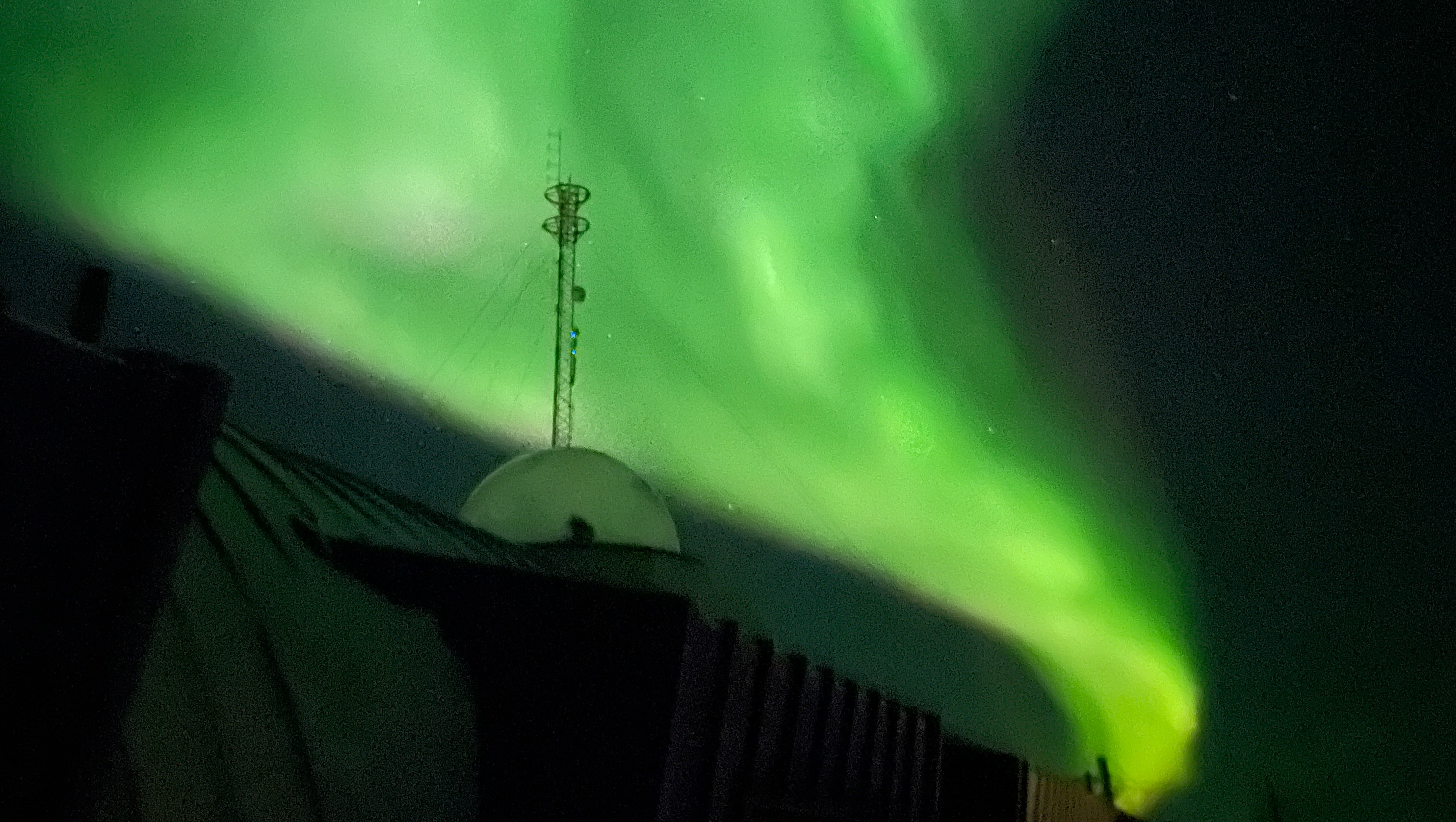
Phenomenal view of Northern Lights that photos just don't do justice of
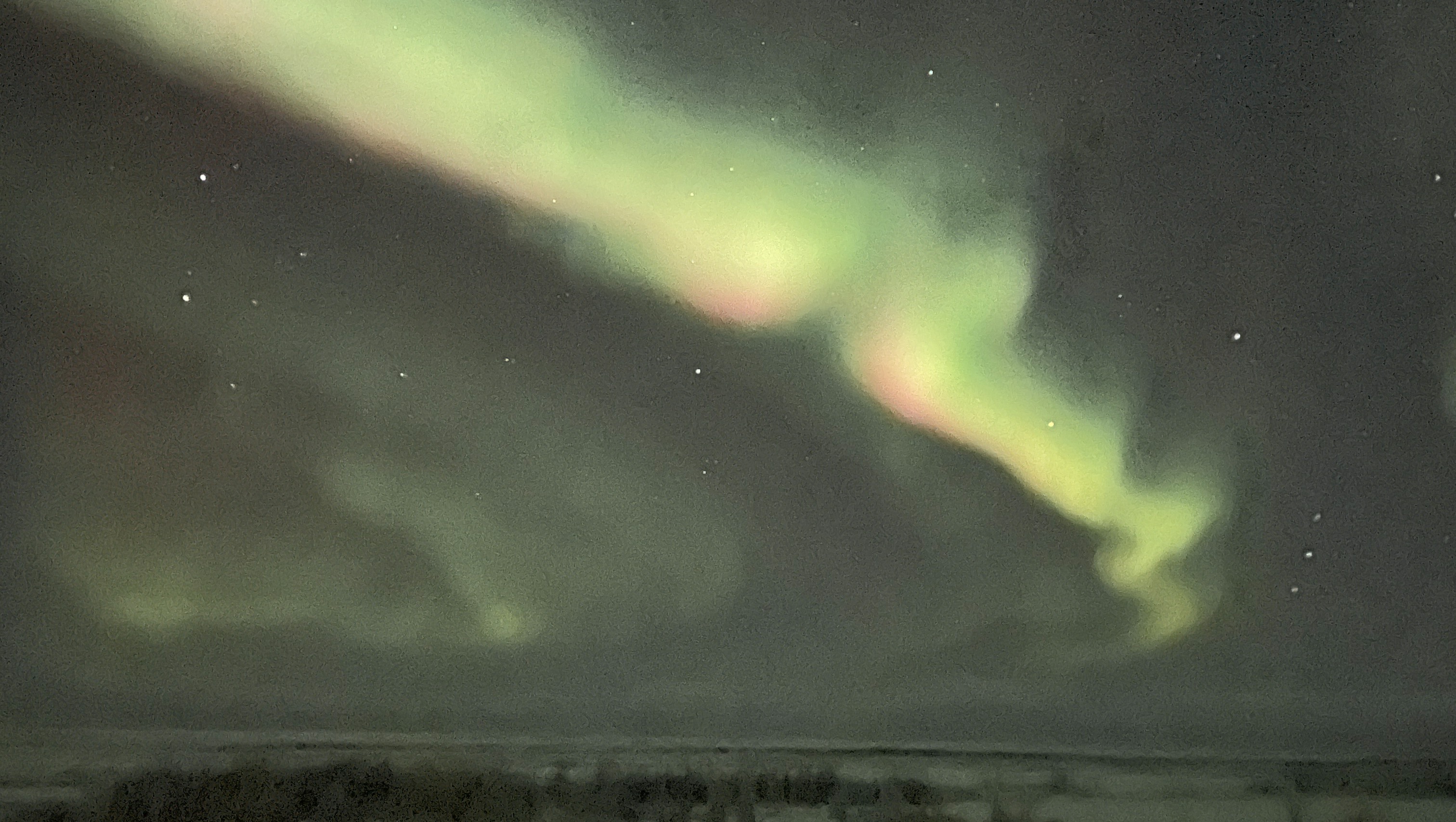
Aurora curtains
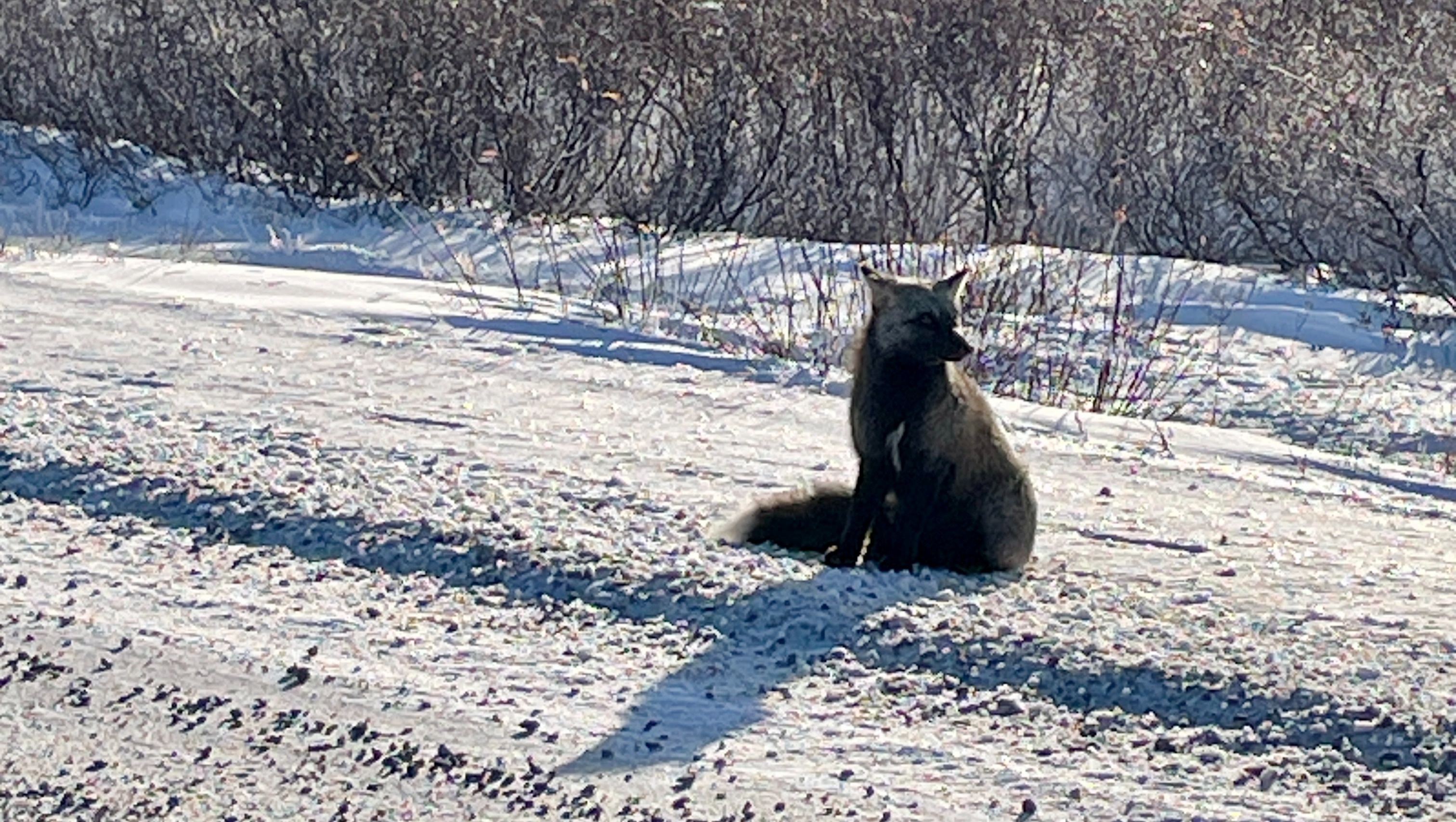
A silver fox on the roadside
Lord of the Arctic
Polar bears in Churchill or the Hudson Bay zone is one of the 19 subpopulations of Polar bears in the 5 range states around the Arctic circle. The reason it's almost guaranteed you can see Polar bears in Churchill during bear season is because this subpopulation moves ashore to start their months-long fasting period when the sea ice of Hudson Bay is still not formed. At the end of the season, they move out onto the bay as it starts to freeze again, forage and hunt ringed seals as their primary source of food. During bear season in Churchill, people generally leave their car doors or house unlocked in case someone needs a quick escape from a bear encounter. It's not uncommon to spot a bear in town.
The international conservation status of Polar bears is classified as Vulnerable with 60-80% of the population concentrated in Canada, classified as Special Concern. The subpopulation in the Hudson Bay zone is unfortunately declining according to WWF data.
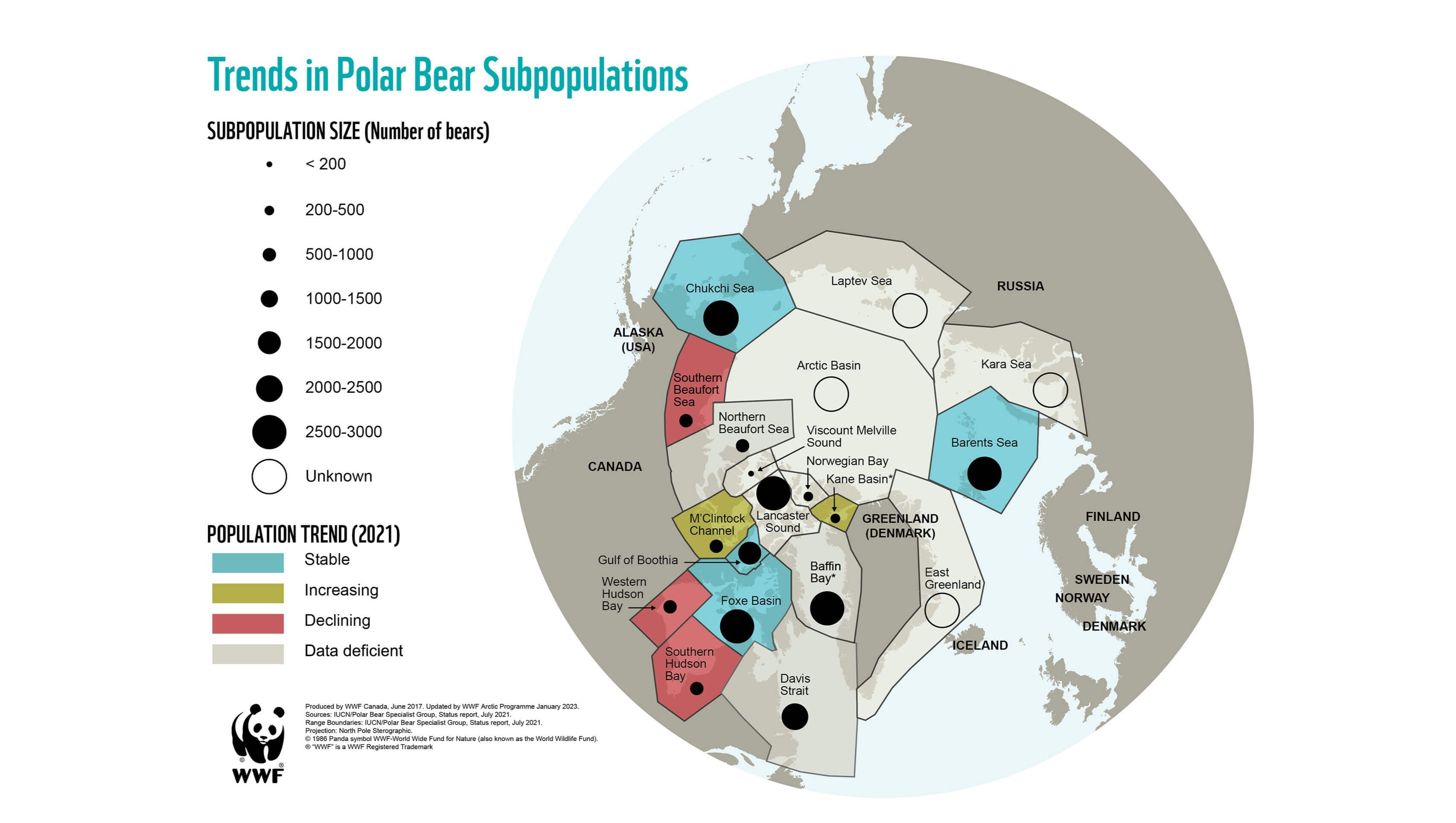
Polar bear subpopulation trend graph by WWF
The single biggest threat to Polar bears is climate change, undisputed by a multitude of scientists and researchers. As the sea ice melts earlier each year due to the rise of temperature in the Arctic, it forces Polar bears to move inland months earlier. And because Polar bears almost exclusively hunt ringed seals for food, the sea ice is essential for their survival.
Polar bears are the apex of the ecosystem and they keep the biological population in check. If they can’t hunt for this food source due to lack of a sturdy ice platform or pure exhaustion, they will move onto other animals or even humans. This could threaten the existence of other Arctic species, such as the Arctic fox or the walrus. Aside from the new, increased threat of being hunted as prey by Polar bears, these Arctic animals will also have to compete for food resources with their predators. Scavengers like the Arctic fox and the snowy owl depend on big kills from Polar bears – feeding from the leftover carcasses – as sources for food. If Polar bears are unable to kill seals, another food source for the wildlife will be cut out. There were also an increase of reports of predatory attacks on humans in the winter in the North, exacerbating human-bear conflict.
Another sad reality for Polar bears to stay on land longer, is that their body masses and health continue to drop, which makes full gestation of pregnant females difficult. This in turn, affects reproduction rate year by year. Scientists predict that by 2050, Polar bear population will decline by 30%. The subpopulation in Churchill particularly will be extinct. Without polar bears to control the seals’ population, the number of seals will subsequently increase, threatening the population of crustaceans and fish in the region, which is an important food source not only for seals, but also for other Arctic wildlife as well as local human populations.
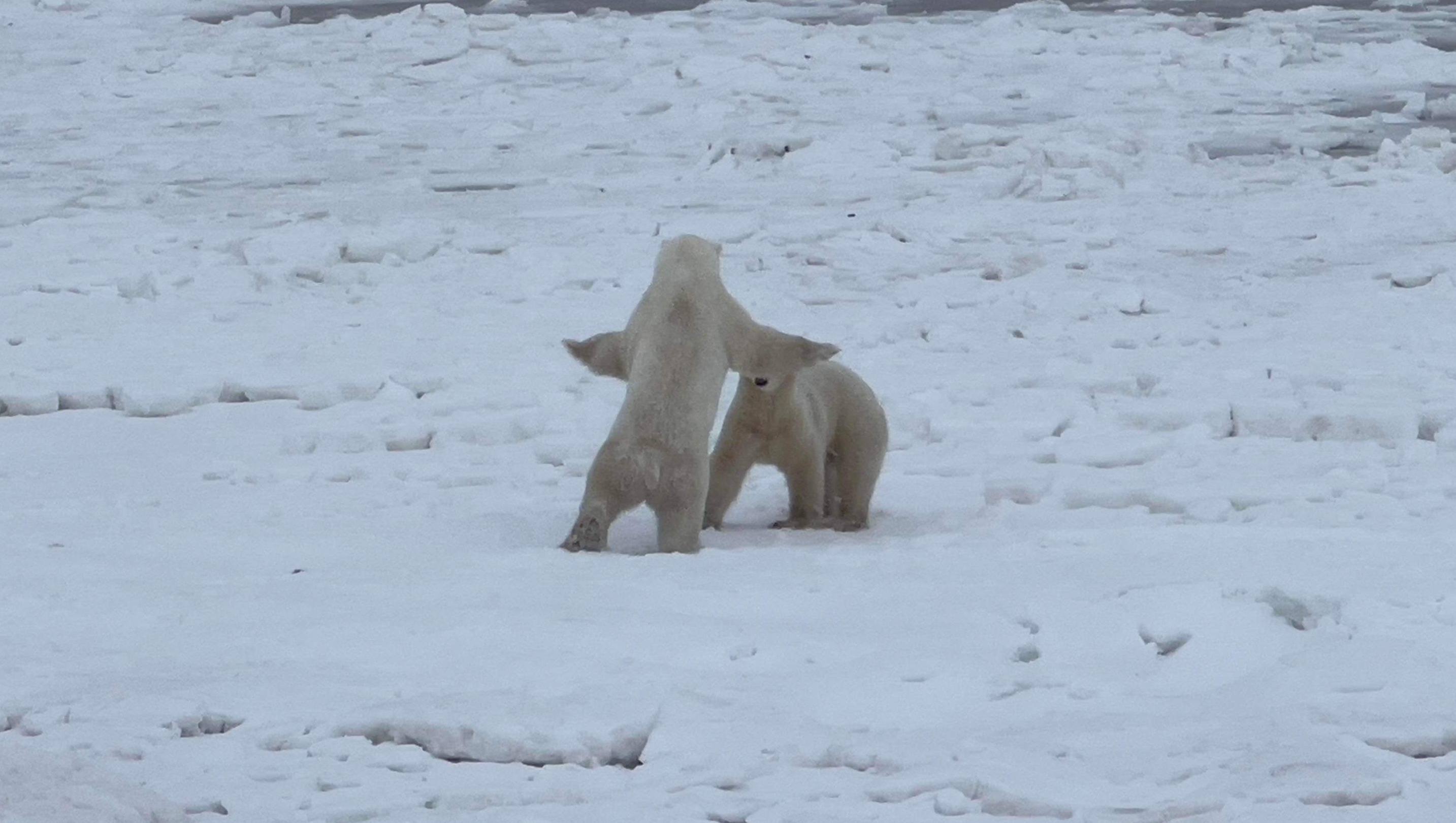
Sparring Polar bears
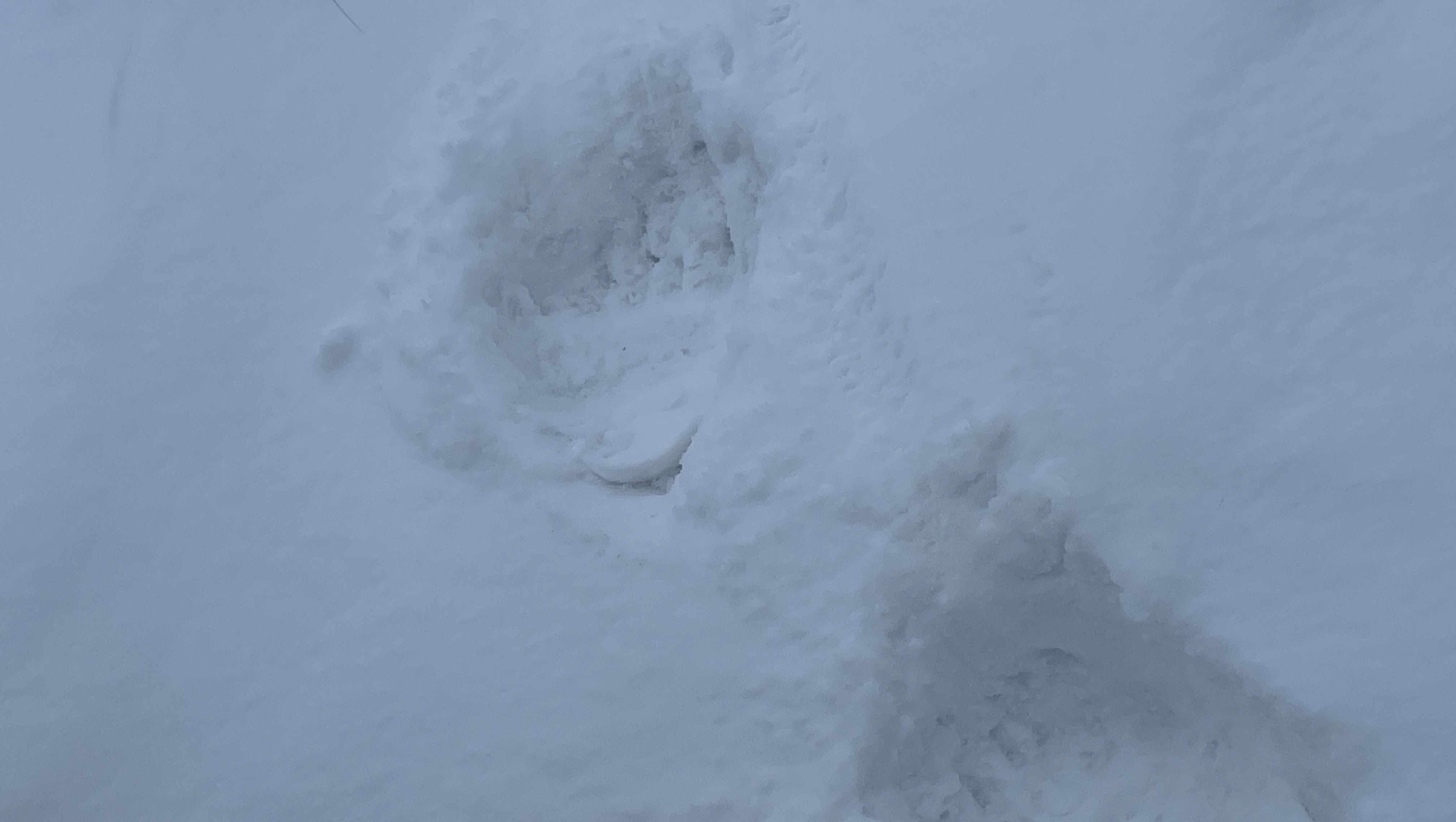
Fresh Polar bear tracks
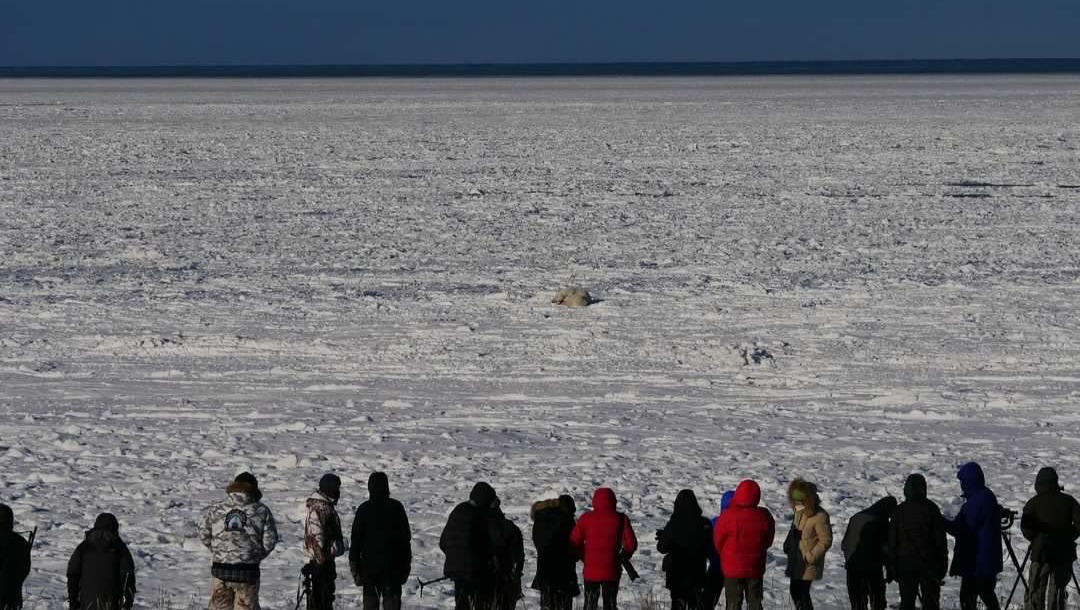
A line of photographers snapping photos of a mom bear and her cub along the Hudson Bay. Photo credit: Mel Deschamps
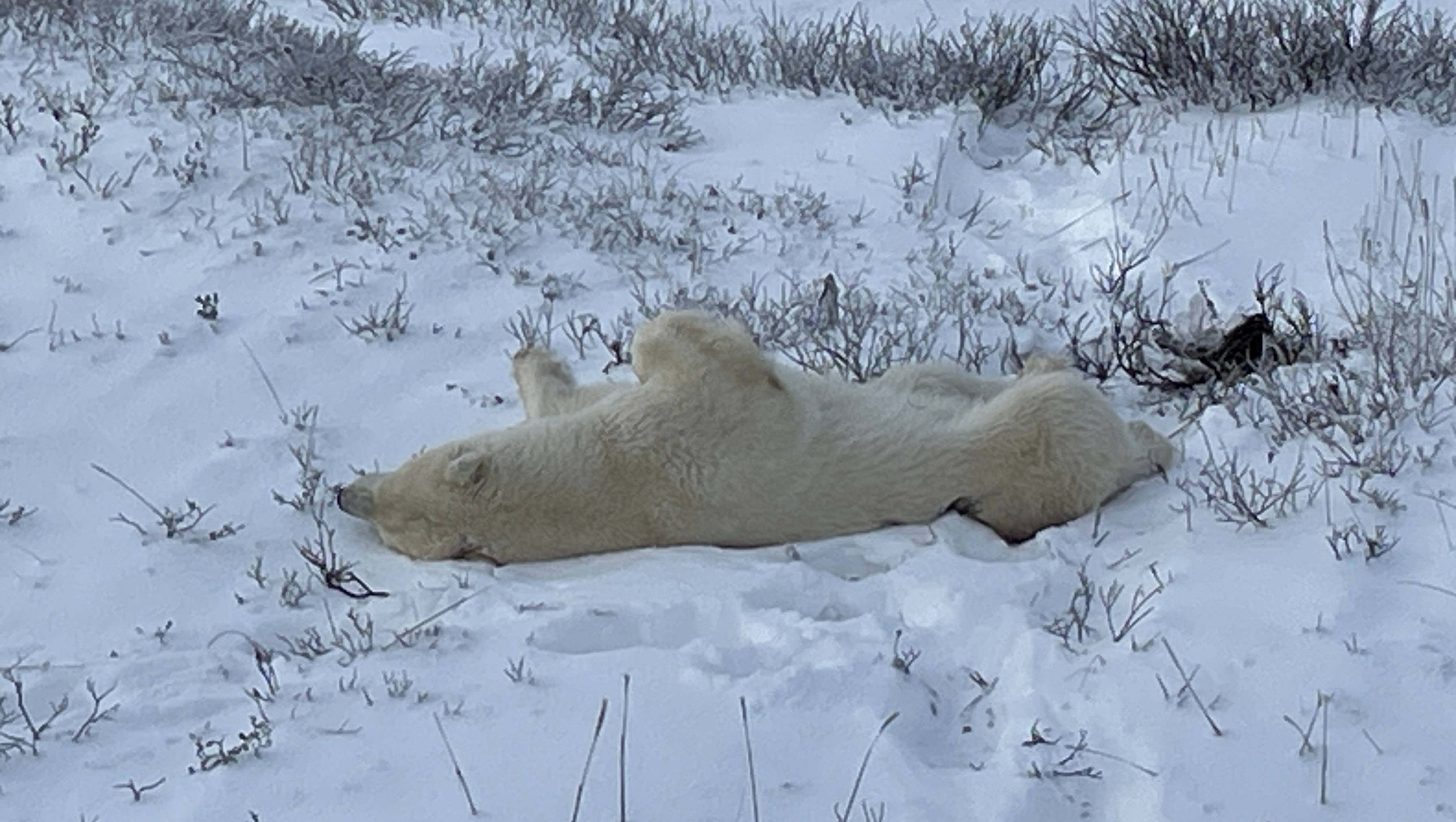
A relaxing bear showing us his belly
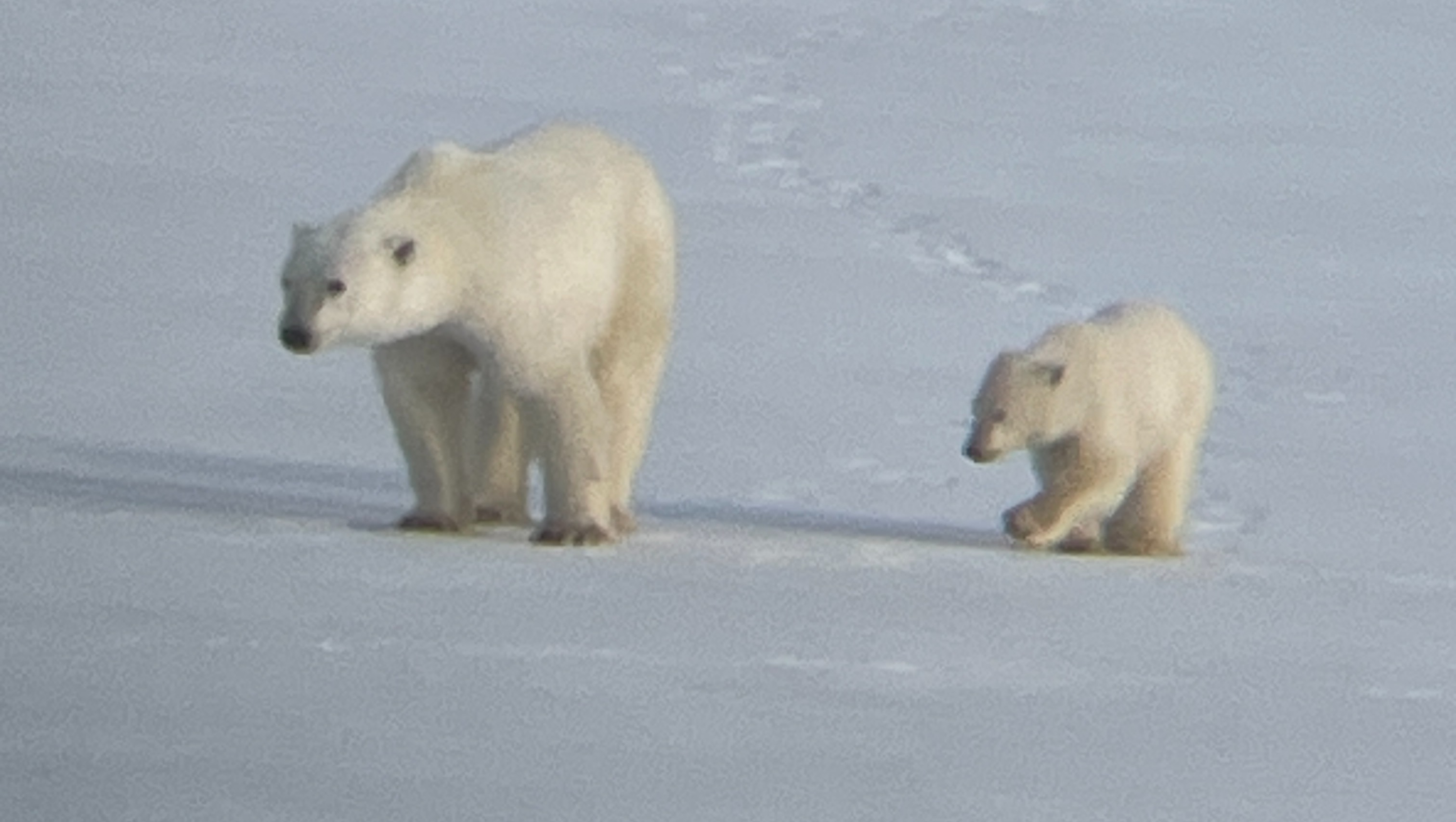
A mom bear and her cub
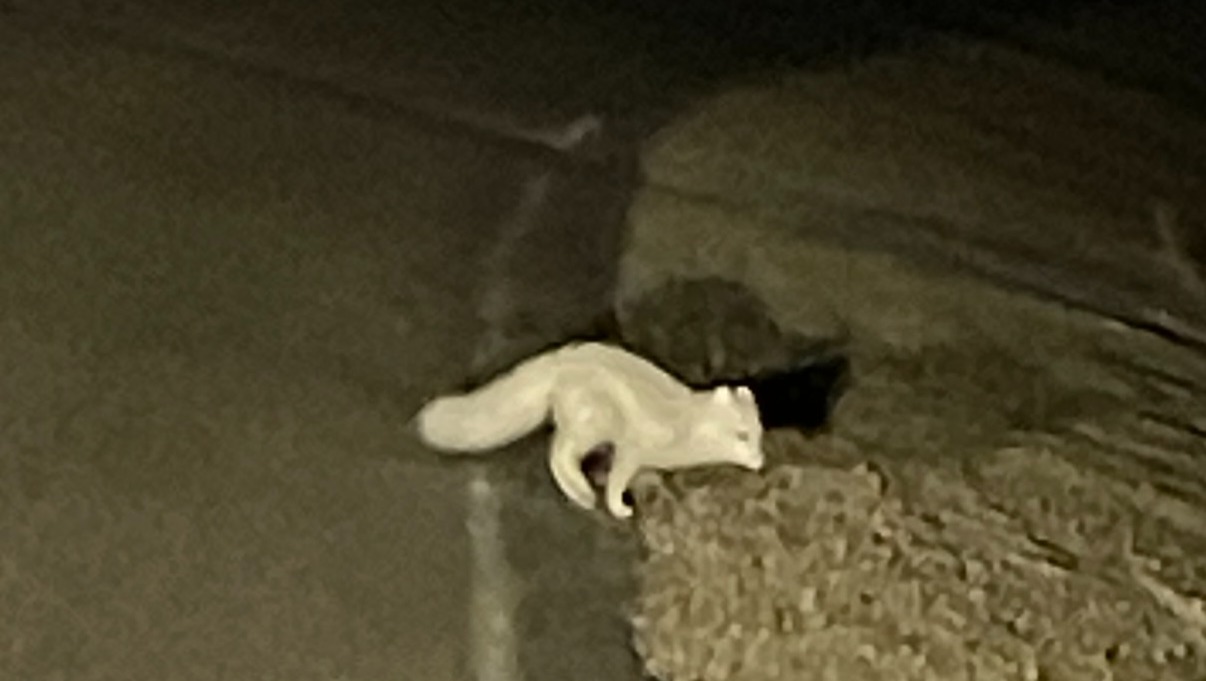
An arctic fox on the roadside
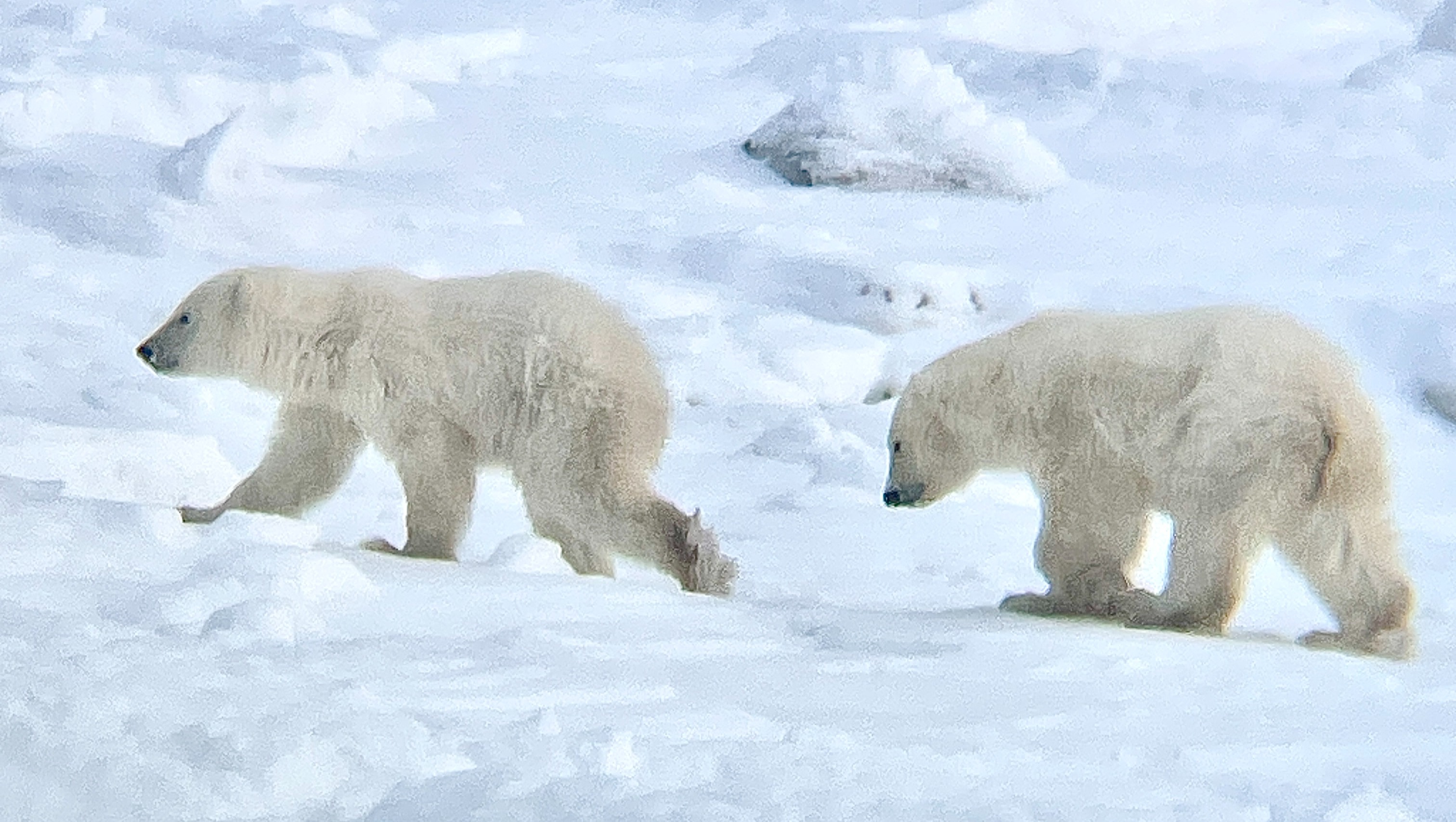
2 walking Polar bear cubs
Raise awareness
Because CNSC serves as a primary facilitator for Learning Vacations and support researchers to promote knowledge of the North to the public, keeping the light green at CNSC is an utter important task and responsibility. Here is the financial report of CNSC in the fiscal year ending March, 2023. You can also review its balance sheet for the past 5 years. The organization unfortunately has been struggling from the financial aftereffect of the green building construction in 2011 and COVID but it's doing its best to keep the facility and programs running.
The funds raised for CNSC will directly impact the breadth and accessibility of studies towards the understanding of the North. This includes the future of Polar bears, the physical environment, social issues, economic and sustainable resource development, appreciating the history and supporting the future of the indigenous population as well as conservation of other flora and fauna of the subarctic.
Among the economy and what's happening around the world, this may be a big ask to some of you, on the contrary, I believe now is the critical time to advocate for and preserve our world from the damage we've done. The way I see it is that helping others is not mutually exclusive with keeping ourselves safe. They can co-exist. $10-50 can potentially change the course of our future. It's an investment worth making, because it's for our next generation, next generation's generation who will be the ones impacted the most.
Ultimately, to truly achieve Polar bear conservation, it will require us, the people, to change the way we live to reduce usage of carbon-based fuels, we can start small by carpooling or biking to minimize our carbon footprint and supporting businesses that engage in sustainable practices. We can then move onto bigger things such as upgrading to well-insulated homes, energy-efficient furnaces and vehicles. It's only when all of us come together, raise awareness by spreading the knowledge we learned, as well as start the changes at home, can we truly make a difference for Polar bears and all other species. Most importantly, we need to get involved on the policymaking level and lobby for changes to people's throwaway lifestyle.
"The critical thing is that polar bear conservation can't occur in the Arctic." - Steven Amstrup, a senior scientist at Polar Bears International.
For more information on how to volunteer at the Churchill Northern Studies Center, please follow this link: https://churchillscience.ca/visit/volunteer-expedition and message me to learn more about responsibilities and expectations. For Learning Vacation packages, please visit https://churchillscience.ca/visit/learning-vacations.
P.S. I'll periodically post updates to share fun facts and information I acquired during my trip.
Co-organizers (2)
Lu Wang
Organizer
New York, NY
Lu Wang
Beneficiary
Melanie Deschamps
Co-organizer